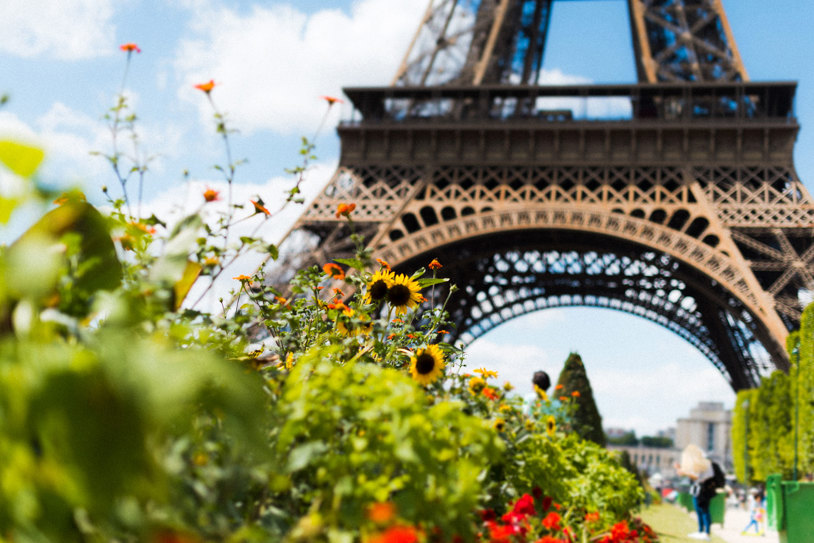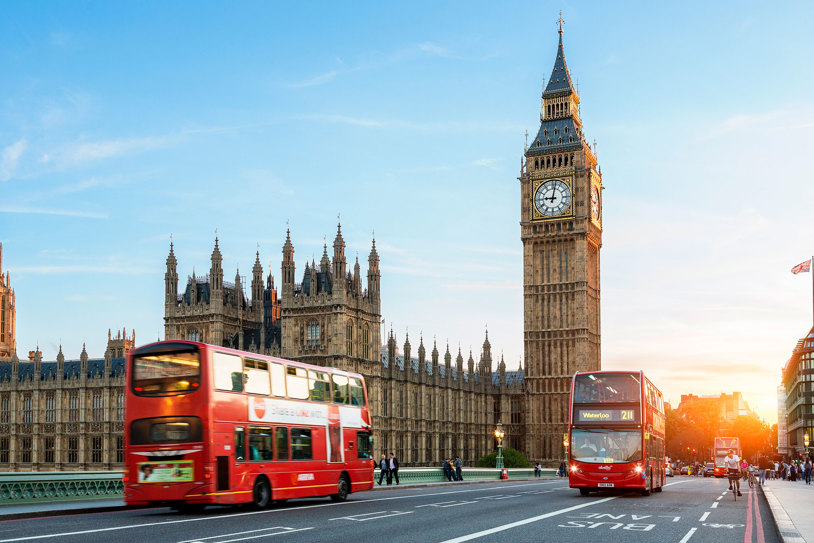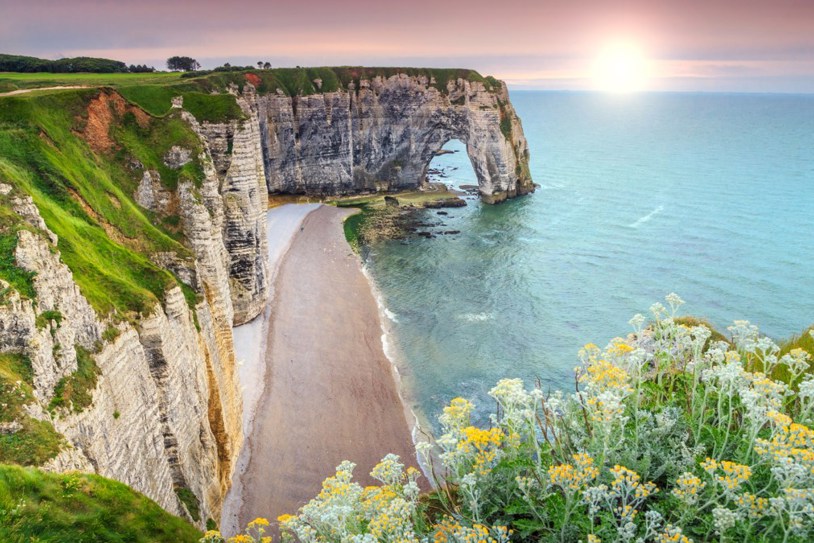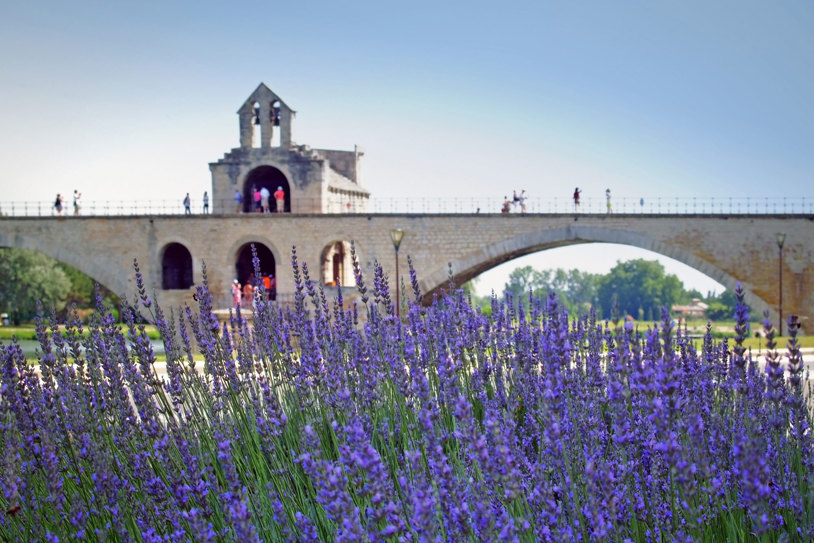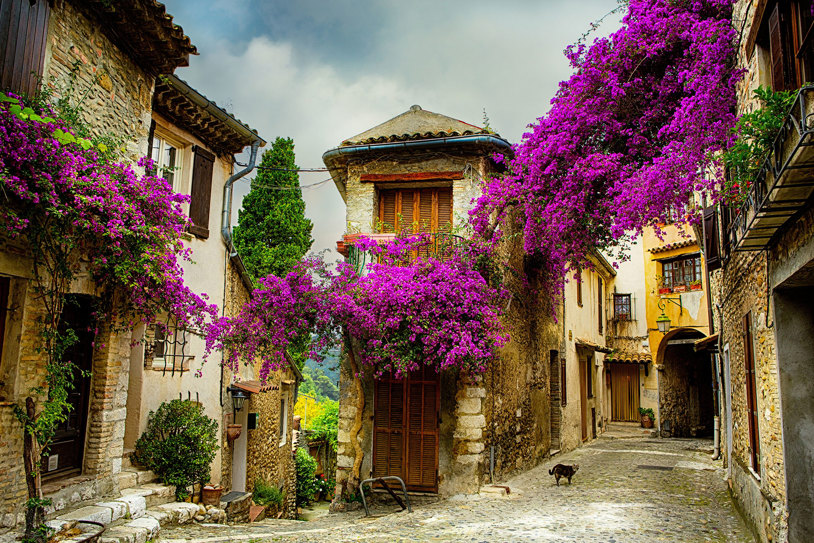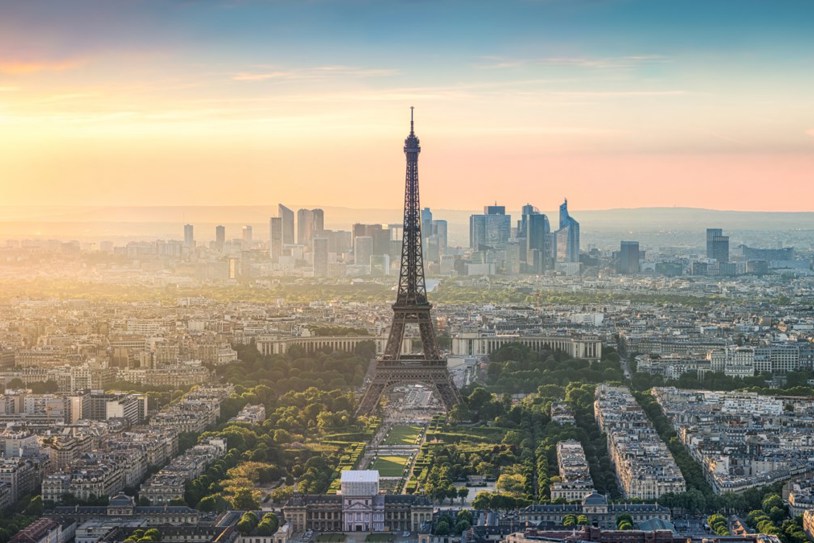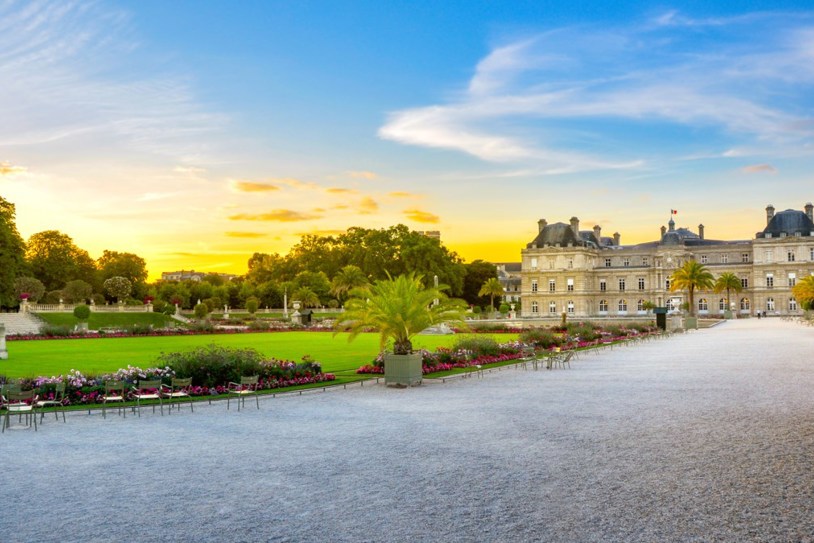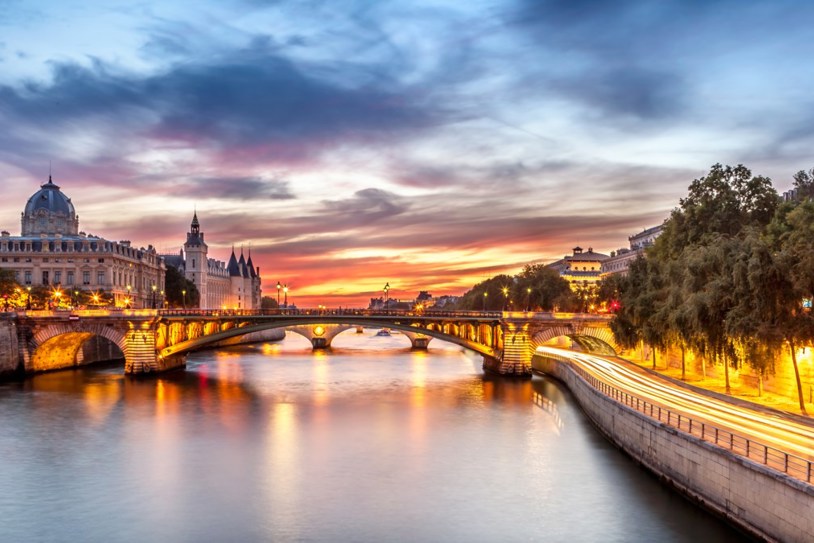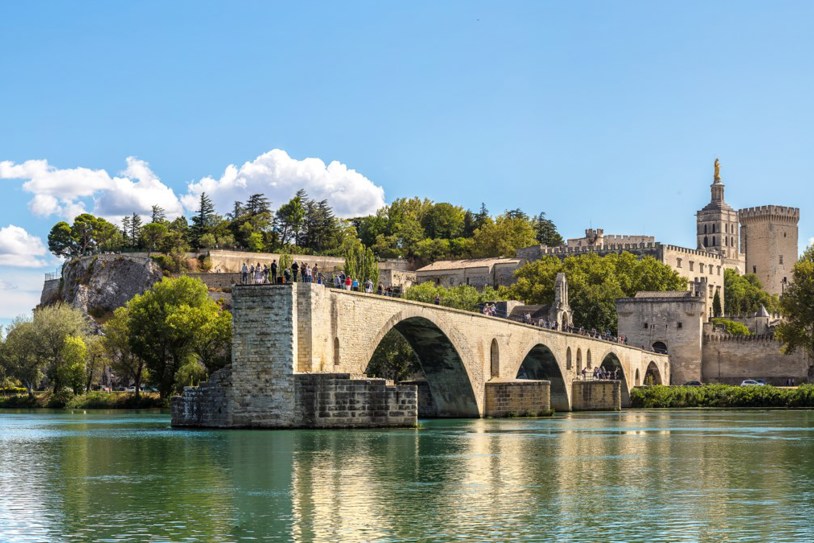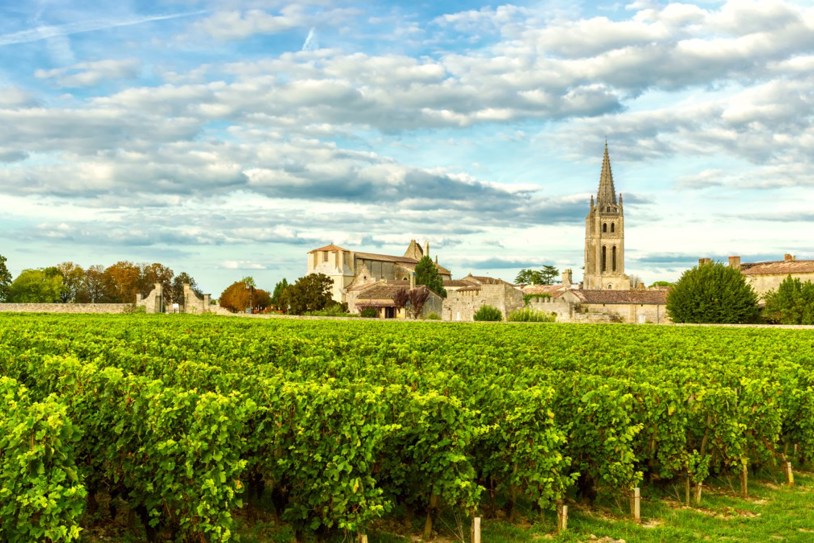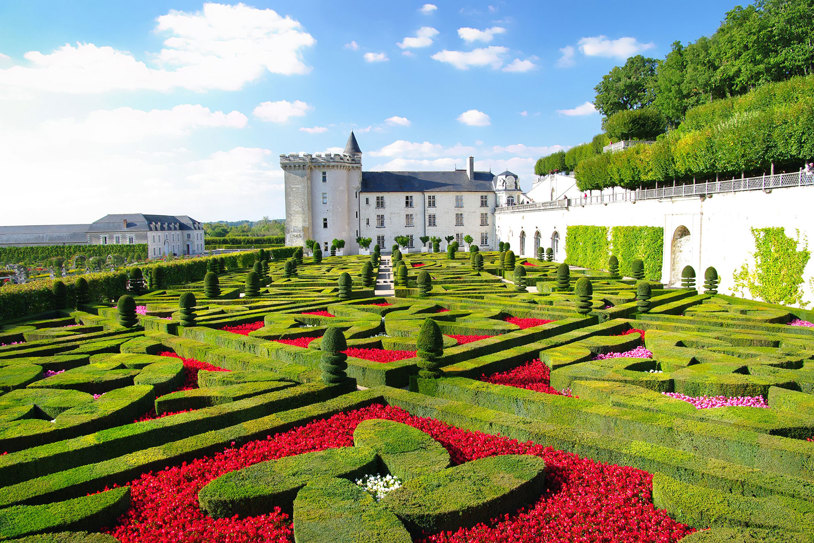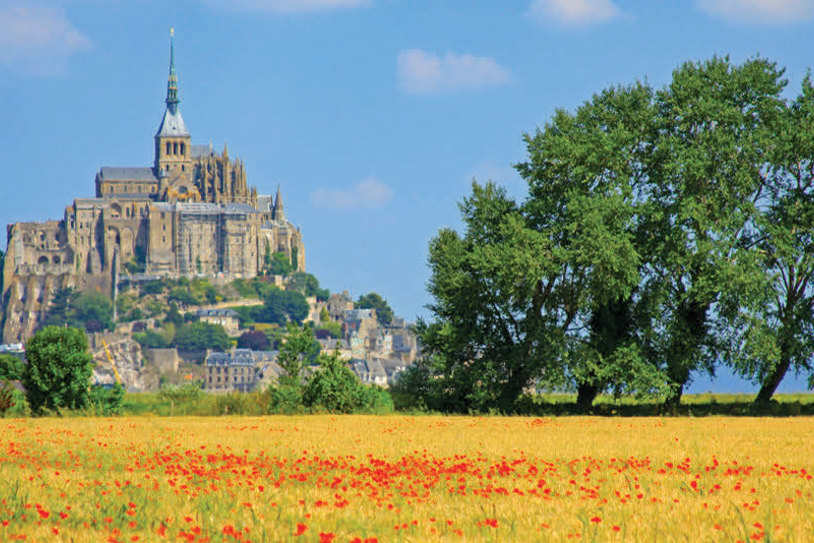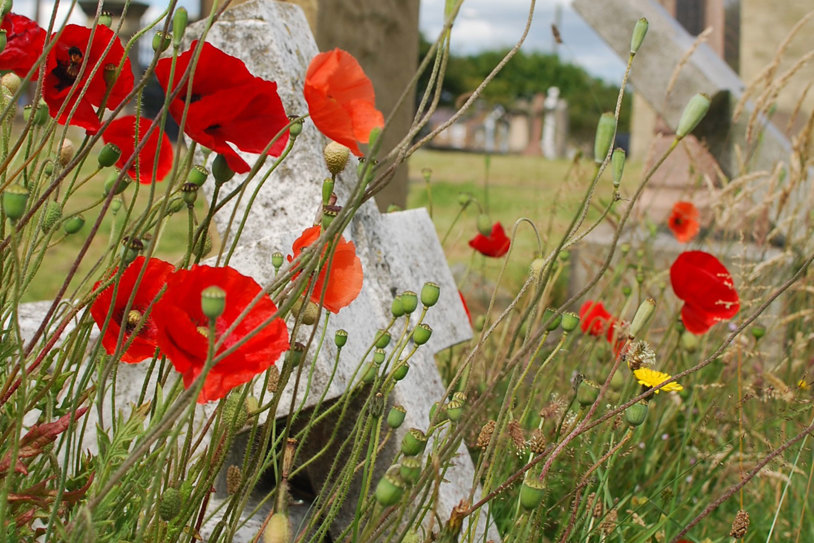See the grand Champs-Élysées, Eiffel Tower, and the Arc de Triomphe. Delve into the hidden squares and secret passages of Paris's historic neighborhoods
About Us
For more than 50 years, Grand European Travel has been providing a wonderfully simple, and genuinely personal, way to travel.
Meet Our Team
Our Travel Specialists make planning your trip fun and hassle free
Guided Vacations
Top 10 advantages of taking a guided tour
Guest Reviews
As you plan your trip, read our unedited guest reviews
Travel Insurance
Protect your vacation with travel insurance.
Responsible Travel
Powered by our not-for-profit foundation, TreadRight
Current Offers
From Last Minute Deals to limited time promotions, see all offers.
Big Travel Sale
SAVE up to 15% on 2026 Tours
Double Past Traveler
Double Global Tour Rewards on select trips
Uniworld Anniversary Sale
Save up to 30% on river cruises
GETAWAY Deals
Great deals on last minute travel
AARP Member Benefits
Enjoy exclusive savings on guided tours and river cruises
2027 Cruise Savings
Early Booking Savings up to 20%
Solo Traveler Deals
2026 Single Supplement Cruise Discounts
The Best Places
to Visit in France
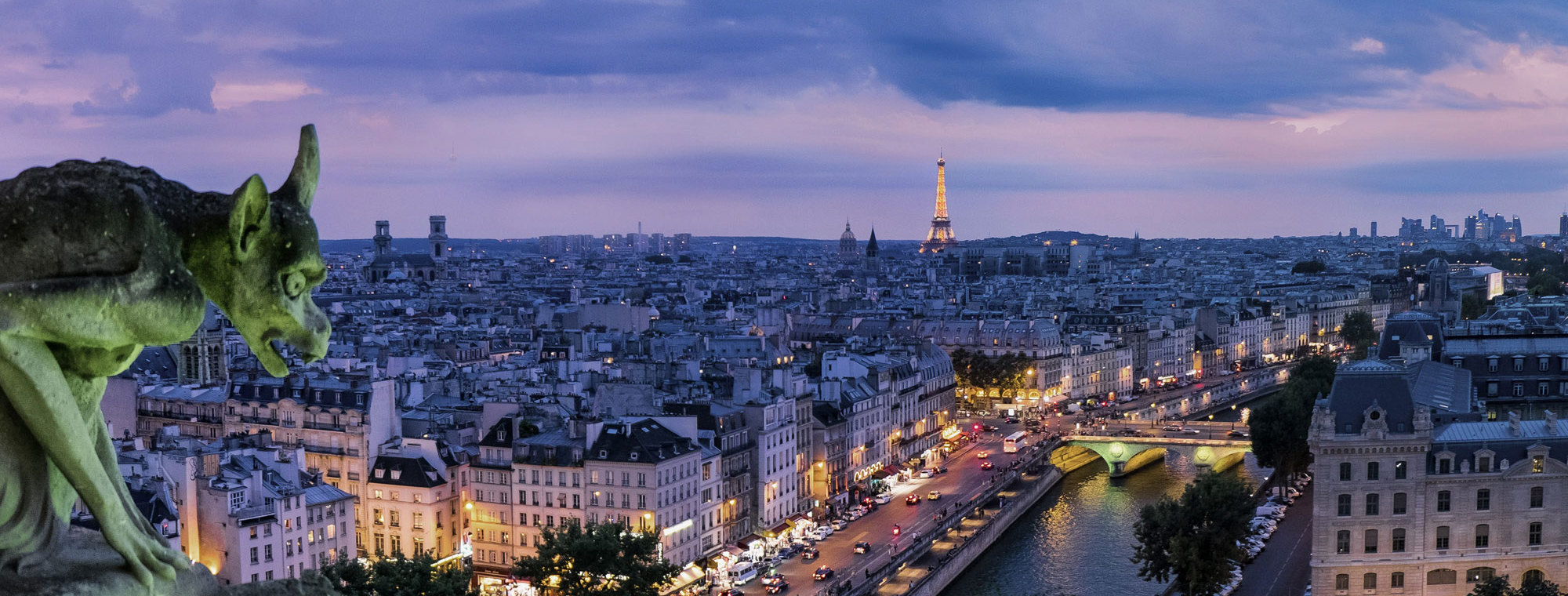
Paris, France
There are few places on Earth as beloved as the city of Paris, France. There is little wonder why, once you arrive.
The food, language, architecture, wine, and small, crooked streets are alone worthy of adoration. Factor in the museums, the culture, the Seine, and the art districts, and you’re bound to fall for this incredible city. Here are a few of the must-see spots, several of which pair rather nicely with a baguette and some brie…
The Best Places to Visit and Things to Do in Paris
The Eiffel Tower
Among the most recognizable monuments on earth, the Eifel Tower is a massive wrought iron structure that perches at one end of the Champ de Mars. The tower was constructed for the 1889 World’s Fair and continues to turn heads as a symbol for all things French. Architects and designers Alexandre-Gustave Eiffel, Maurice Koechlin, and Stephen Sauvestre made their indelible mark on Parisian soil with the tower that still awes crowds today.
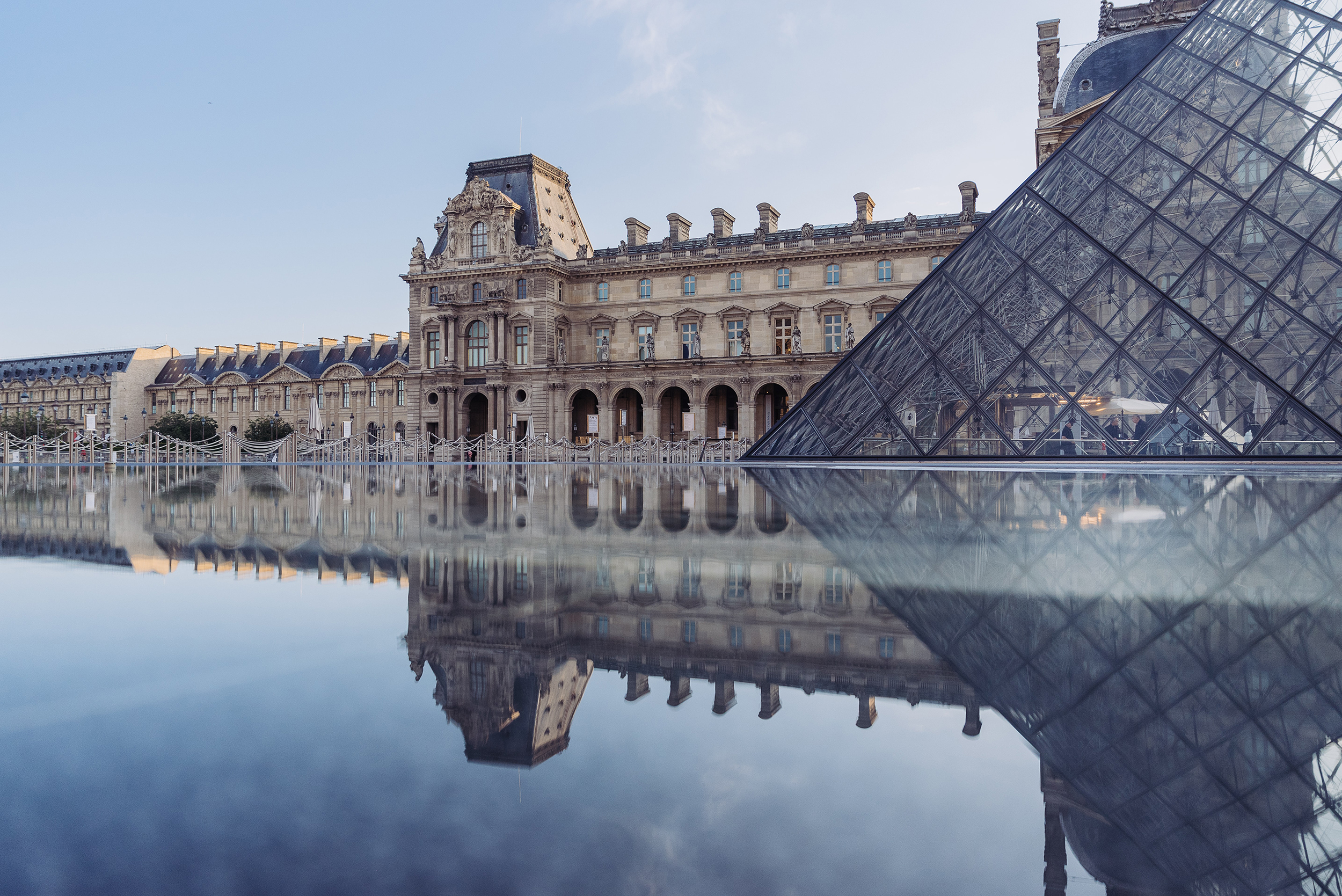
The Louvre
The Louvre is most certainly a feast for the eyes, boasting over 35,000 works of art, including the Mona Lisa, Venus de Milo, The Raft of Medusa, and countless masterpieces from around the world. Visitors can enjoy getting an up-close view of human history captured in the art, sculpture, and relics found at the Louvre.
From the Seated Scribe, dating to the 4th Dynasty of Egypt (2620-2500 BC), to the 8th-century Winged Bulls that once stood guard at the Persian Palace of Darius I, turn any corner, and you’re almost sure to exclaim, “That’s here too?!” The museum also includes tours of the Tuileries and Carousel Gardens, and Louvre Castle, which visitors are wise to make time for.
Paris Explorer
Day 1
Welcome to ParisDay 2
ParisDay 3
Consider an Optional Experience to the D-Day Landing BeachesDay 4
A Day to Explore VersaillesDay 5
Experience the Marais and French CuisineDay 6
Enjoy MontmartreDay 7
Paris Your WayDay 8
Au Revoir Paris
London and Paris Explorer
Day 1
Hello LondonDay 2
Soak up Bath and on to StonehengeDay 3
Discover London and Journey to WindsorDay 4
Explore London Your WayDay 5
Cross the English Channel to ParisDay 6
Explore the Sights of ParisDay 7
The Splendor of VersaillesDay 8
Wander Magical ParisDay 9
Au Revoir Paris
Paris and Normandy
Day 1
Paris (Embark)Day 2
La Roche-Guyon, Vernon, GivernyDay 3
RouenDay 4
Caudebec-en-Caux (Honfleur or Étretat)Day 5
Rouen (Normandy Beaches)Day 6
Mantes-la-Jolie (Versailles)Day 7
ParisDay 8
Paris (Disembark)
Best of France
Day 1
Bonjour ParisDay 2
Journey through Burgundy to LyonDay 3
Onwards to Avignon, Monaco and the French RivieraDay 4
The French Riviera Your WayDay 5
Admire Arles and Continue to CarcassonneDay 6
Pilgrimage to Lourdes and on to BiarritzDay 7
Venture to BordeauxDay 8
Discover Beautiful Saint-ÉmilionDay 9
Explore a Château in the Loire ValleyDay 10
Off to Mont-Saint-Michel and the Normandy BeachesDay 11
Journey to ParisDay 12
Discover the Delights of ParisDay 13
Farewell Paris
Wonderful France
Day 1
Bonjour FranceDay 2
Discover the Delights of ParisDay 3
Journey through Burgundy to LyonDay 4
Continue to Monaco and the French RivieraDay 5
The French Riviera Your WayDay 6
On to Saint-Tropez and AvignonDay 7
Explore Ancient History in Pont du Gard, Arles and AvignonDay 8
Travel By High-Speed Train to ParisDay 9
Au Revoir Paris
Grand France
Day 1
Arles (Embark)Day 2
ArlesDay 3
AvignonDay 4
ViviersDay 5
Tain-l’Hermitage (Tournon)Day 6
LyonDay 7
Mâcon (Beaune)Day 8
Lyon (Disembark), Transfer to Paris via High-Speed TGV Train (Embark)Day 9
La Roche-Guyon, Vernon, GivernyDay 10
RouenDay 11
Caudebec-en-Caux (Honfleur or Étretat)Day 12
Rouen (Normandy Beaches)Day 13
Mantes-la-Jolie (Versailles)Day 14
ParisDay 15
Paris (Disembark)
Ultimate France
Day 1
Bordeaux (Embark)Day 2
Cussac Fort Médoc, PauillacDay 3
CadillacDay 4
Blaye, Bourg sur GirondeDay 5
Libourne (Saint-Émilion)Day 6
Libourne, BordeauxDay 7
BordeauxDay 8
Bordeaux (Disembark), Transfer to Paris via High-Speed TGV Train (Embark)Day 9
La Roche-Guyon, Vernon, GivernyDay 10
RouenDay 11
Caudebec-en-Caux (Honfleur or Étretat)Day 12
Rouen (Normandy Beaches)Day 13
Mantes-la-Jolie (Versailles)Day 14
ParisDay 15
Paris (Disembark), Transfer to Lyon via High-Speed TGV Train (Embark)Day 16
LyonDay 17
Mâcon (Beaune)Day 18
Tain-l’Hermitage (Tournon)Day 19
ViviersDay 20
AvignonDay 21
ArlesDay 22
Arles (Disembark)
A Portrait of Majestic France
Day 1
Bordeaux (Embark)Day 2
Cussac Fort Médoc, PauillacDay 3
CadillacDay 4
Blaye, Bourg sur GirondeDay 5
Libourne (Saint-Émilion)Day 6
Libourne, BordeauxDay 7
BordeauxDay 8
Bordeaux (Disembark), Transfer to Paris via High-Speed TGV Train (Embark)Day 9
La Roche-Guyon, Vernon, GivernyDay 10
RouenDay 11
Caudebec-en-Caux (Honfleur or Étretat)Day 12
Rouen (Normandy Beaches)Day 13
Mantes-la-Jolie (Versailles)Day 14
ParisDay 15
Paris (Disembark)
Champs-Élysées
Known as one of the best places to shop on Earth, the Champs-Elysees stretches a mile across the Parisian landscape, from the obelisk at Place de la Concorde to the Arc de Triomphe on the west. Every major haute couture name, from Louis Vuitton to Hermes, has a brick-and-mortar shop on the Champs-Elysees. There’s more than just shopping, though. Visitors can enjoy foods from almost every culture created by some of the best chefs in the world. The gorgeous tree-lined street offers wide sidewalks that lead to important milestones, including the Grand Palais and Petit Palais—both boasting ever-changing art exhibitions. You can visit Champs-Elysees anytime, day or night, as many of the shops run on a 24-hour schedule to accommodate the wonderful culture of Paris.
The Musée d’Orsay
While it’s true that a visit to the Louvre is practically mandatory while in Paris, the Musée d’Orsay is unquestionably another must-see for visitors to the city of lights. The museum is housed in a former railway station and, like the Louvre, is itself a work of art. Built just before 1900 and renovated in the 1980s, the architecture alone is worth the visit.
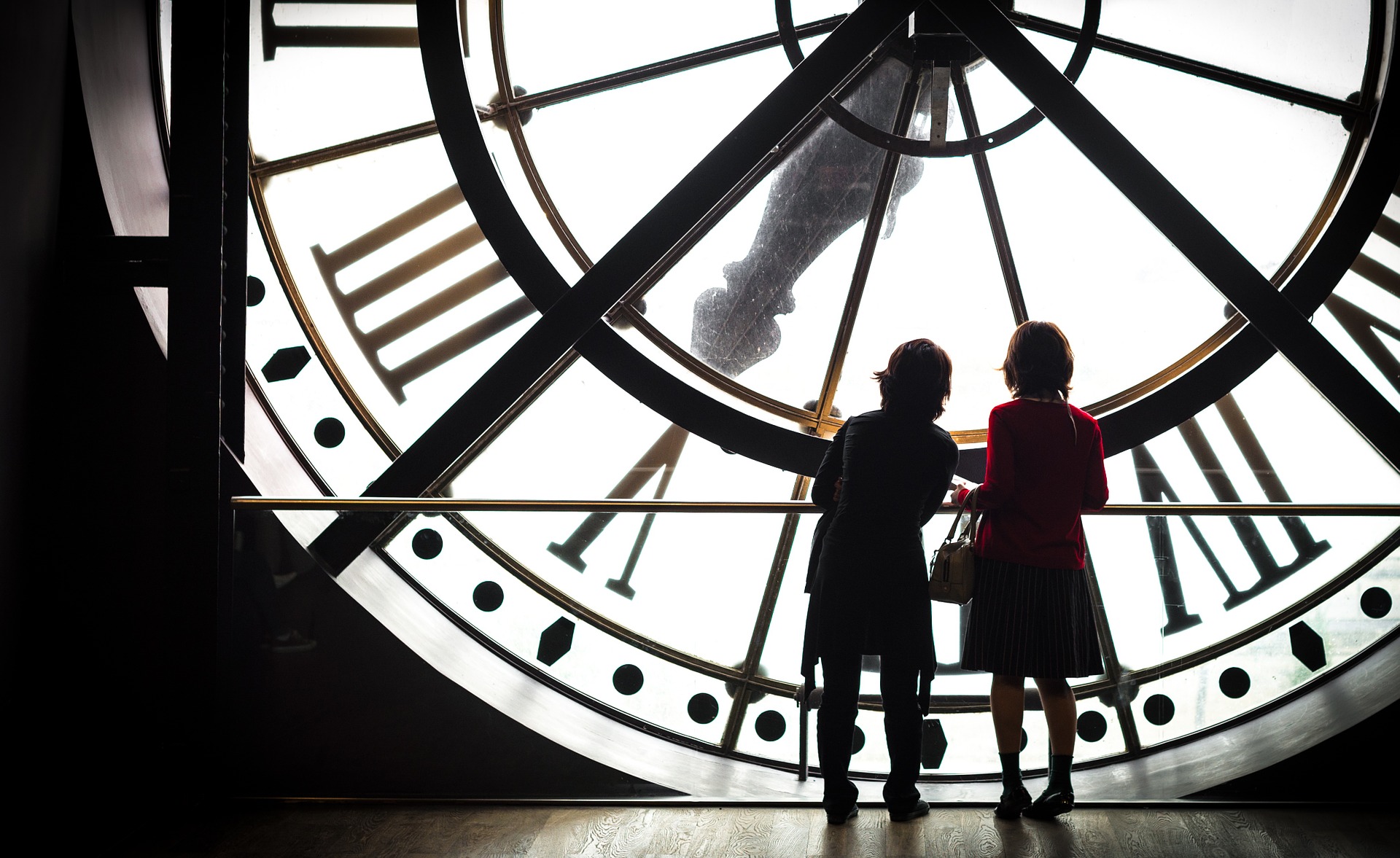
The building boasts a magnificent, barrel-vaulted, glass and tile main hall. Placed within the glass walls are large, transparent clocks, each overlooking a different side of Paris. Depending on the clock, you can peer through its face and view the Louvre, the famous Sacré-Cœur basilica, the Tuileries Gardens, or the iconic Grand Roue de Paris, The Great Ferris Wheel of Paris.
The Musée d’Orsay is highly lauded for its one-of-a-kind impressionist works by French masters such as Monet, Van Gogh, and Matisse, among many others. Great impressionist art is just the tip of the iceberg, however. The museum also hosts a vast selection of sculptures, photography installations, and architectural marvels.
The Pont des Arts
While walking along the Seine, visit The Pont des Arts, nicknamed “The most romantic bridge in Paris.” You'll notice thousands of padlocks carefully attached to both sides of the bridge. Some small, some large. It is popular for couples to ceremoniously attach a padlock to the bridge with their names written or engraved on it. After that, they throw the keys into the river below, symbolizing everlasting love.
Le Marais
Laced with cobblestone streets and French Gothic architecture, the perineal Marais District is the closest you can find to Pre-Napoleon, medieval Paris. Le Marias has been the flashpoint of cultures for hundreds of years, from leading artists, writers, poets, and musicians to decadent French chefs and bakers and well-known pillars of the French Jewish community. Similar in feel to the West Village in New York, the neighborhood is home to many shops, galleries, and architecture. Simply walking around Le Marais is a treat as you’re always sure to be delighted.
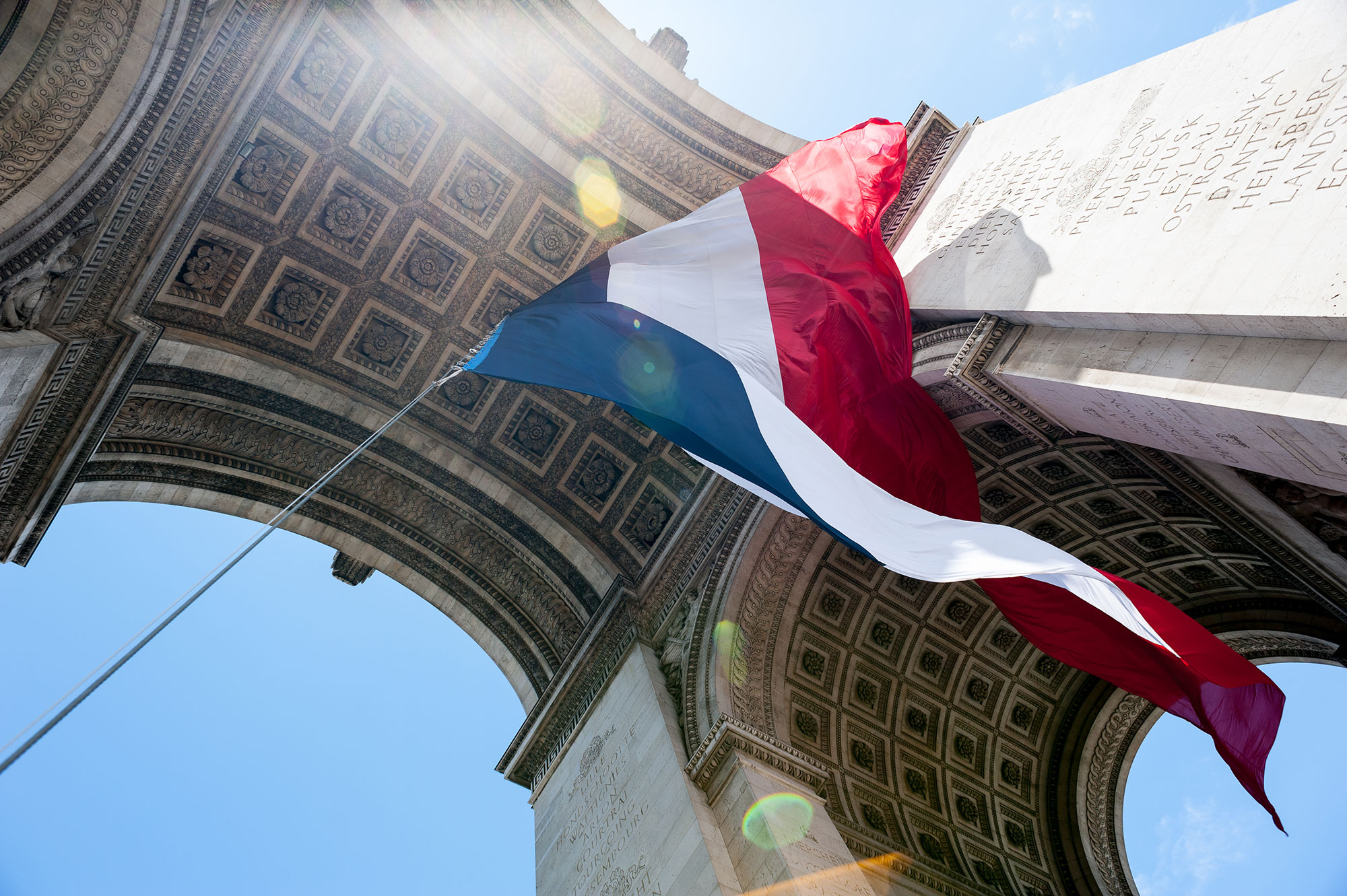
Arc de Triomphe
Commissioned by Napoleon, the Arc de Triomphe de l’Étoile was erected to honor those who fought and died for France in the French Revolutionary and Napoleonic Wars. The monumental arch was built between 1806 and 1836 and inaugurated by King Louis Philippe. Located at the west end of Champs-Elysees, the Arc de Triomphe is the largest of its kind. The Arch is decorated with numerous sculptures and reliefs depicting moments in the government and military’s history. Beneath the Arch lays The Tomb of the Unknown Soldier, interred on November 11, 1920. On the tomb, an internal flame is kept alight in remembrance of soldiers who died but were never identified during WWI and WWII.
Macarons at Laduree
Laduree is a French family business specializing in making luxury cakes and pastries since 1862. They are undoubtedly the best-known makers of macarons in the world, and with good reason. When one thinks of macarons, one thinks of coconut. Not so with these delicious bite-size cakes crisp on the outside and soft, smooth and creamy in the center. The range of flavors ensures that there is always something for le ‘Plaisir du Palais — the palate's pleasure. Chocolate, coffee, caramel, vanilla, strawberry, lemon, pistachio. The selection is great, and all are super delicious. There are several Laduree shops in Paris, the most recent having been opened in the shopping mall at the world-famous Louvre museum.
Galeries Lafayette
Fine Perfume Beneath a Stunning Glass Dome. The Paris flagship of Galeries Lafayette started life as a simple haberdashery at the end of the 19th century. Enter the perfumery department on the ground floor and simply lift your eyes to the heavens. This beautiful 10-story building is gloriously crowned by a magnificent dome of colored glass and wrought iron right out of the Bel Epoch. Simply spectacular!
Les Bouquinistes: Browse For Books Along The Seine
Les Bouquinistes draws its name from the word “bouquin,” which means book and generally a second-hand book. Alongside the banks of the River Seine, you'll find these booksellers of used and antiquarian books. The Seine is thus described as the only river in the world that flows between two bookshelves. The green shuttered stalls are opened daily and offer books and postcards, prints, and posters.
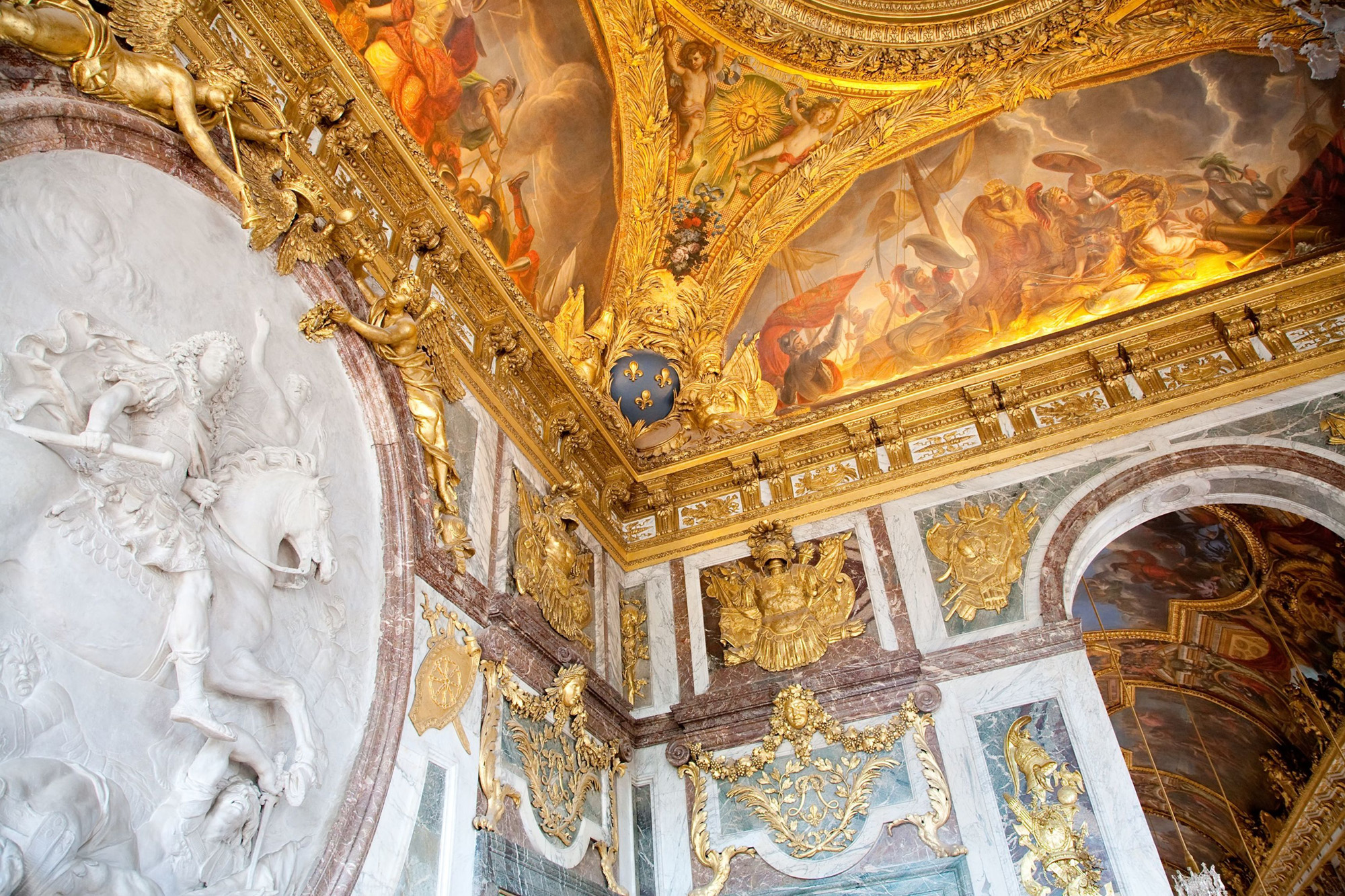
Palace of Versailles, France
The Palace of Versailles is one of the most famous and extravagant palaces in the world. Once the official seat of power in the 17th century, King Louis XIV transformed the former hunting lodge into the opulent royal palace we see today. From the Hall of Mirrors, where grand balls were held, to the State Apartments and the intricate gardens and mazes, the Palace of Versailles is so beautiful and opulent it could bring a tear to your eye. Don’t miss the exquisite Grand Trianon Palace, made from pretty pink marble. This former seat of the French monarchy is a must-visit when in Paris and one of the world’s most majestic buildings.
The Best Places to Visit and Things to Do in Burgundy and Provence, France
In summer, winter, or in between, France is home to some of the most beautiful scenery. If you’ve traveled to France to take in the gorgeous landscape, you need to look no further than Provence in the country’s south. Think big, open blue skies, paired with canyons of limestone, dissected with turquoise rivers and lakes, combined with the faint smell of lavender; Provence really does offer the best of France when it comes to the great outdoors.
Lyon, France
Sitting on the junction of the Rhône and Saône rivers, the UNESCO World Heritage city of Lyon boasts a history dating back over 2000 years.
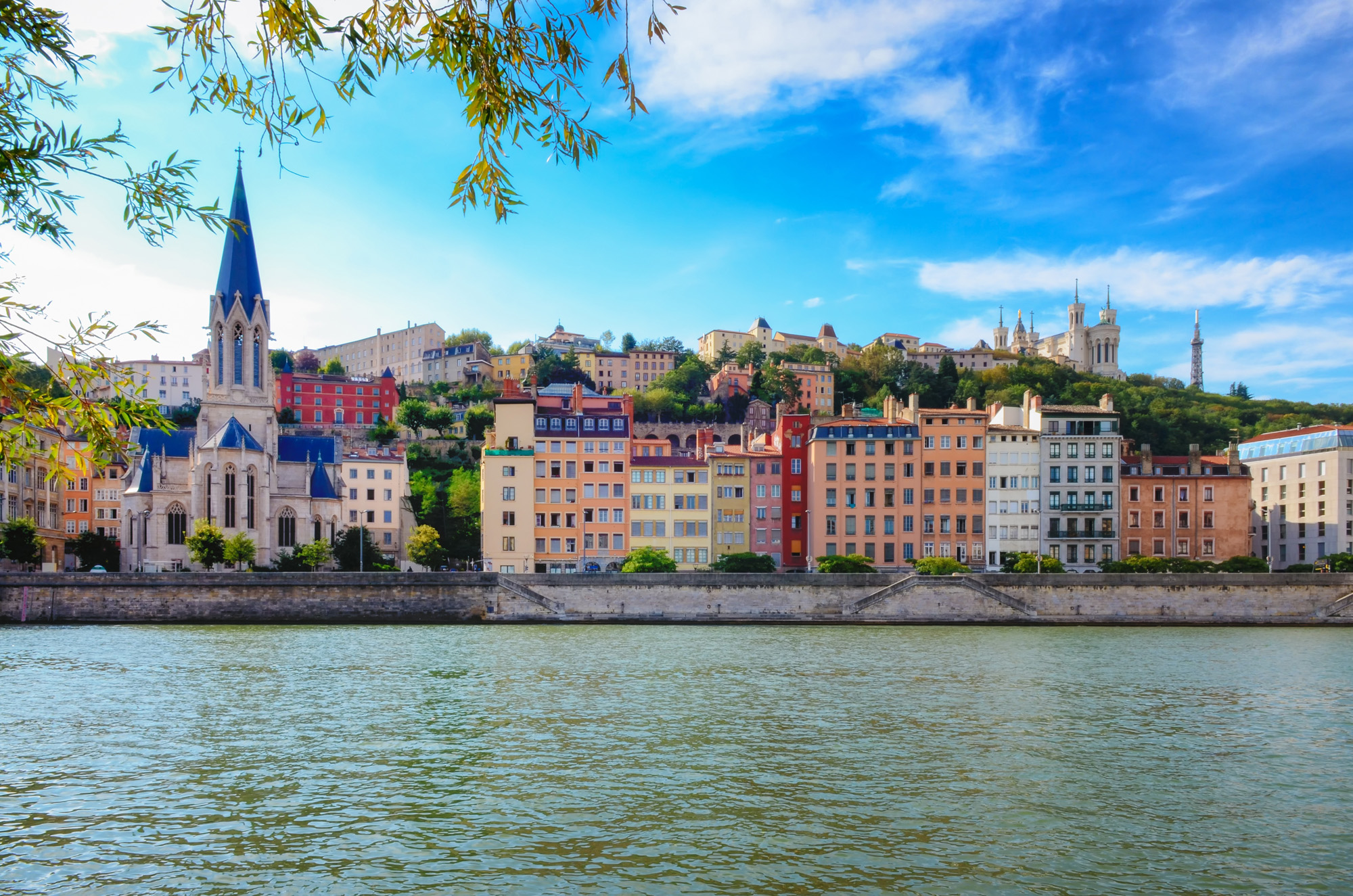
Medieval and renaissance architecture give the city an impressively historic feel, with the magnificent Roman Amphitheater featured as the city's centerpiece. Claiming the title ‘gourmet capital of France’ is no mean feat in a country obsessed with food, but Lyon’s vast array of imaginative restaurants and regional specialties have helped the city seal the deal.
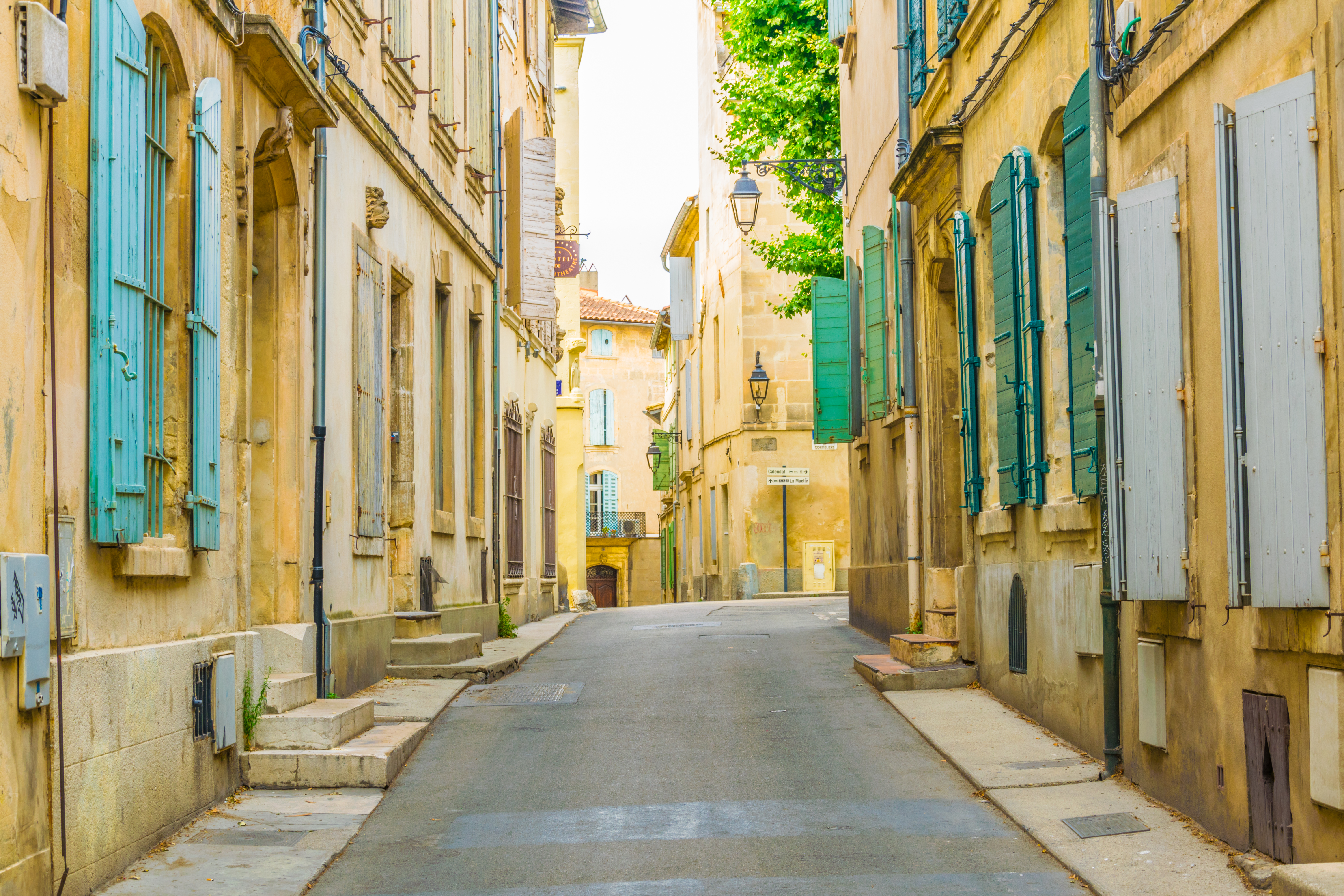
Arles, France
Explore the sun-drenched Provençal town with an allure all its own. Known for its remarkable Roman ruins, Arles so inspired Van Gogh that he painted some 200 paintings there. Arles has existed since the sixth century BC when the ancient Greeks founded it and named it Theline. Here, the Romans built their first bridge across the Rhône River, creating a vital overland route between Italy and Spain.
The pace of life is decidedly more relaxed in Burgundy, where endless rows of grapes hang heavy on the vine.
Burgundy and Provence
Day 1
Arles (Embark)Day 2
ArlesDay 3
AvignonDay 4
ViviersDay 5
Tain-l’Hermitage (Tournon)Day 6
LyonDay 7
Mâcon (Beaune)Day 8
Lyon (Disembark)
Wonderful France
Day 1
Bonjour FranceDay 2
Discover the Delights of ParisDay 3
Journey through Burgundy to LyonDay 4
Continue to Monaco and the French RivieraDay 5
The French Riviera Your WayDay 6
On to Saint-Tropez and AvignonDay 7
Explore Ancient History in Pont du Gard, Arles and AvignonDay 8
Travel By High-Speed Train to ParisDay 9
Au Revoir Paris
Country Roads of France
Day 1
Welcome to ParisDay 2
Champagne Region and on to DijonDay 3
Free Time in DijonDay 4
ChamonixDay 5
Lakeside Annecy and GrenobleDay 6
The French Riviera to reach NiceDay 7
Nice and the Principality of MonacoDay 8
Picturesque ProvenceDay 9
Avignon and Pont du GardDay 10
Carcassonne and to AlbiDay 11
Free Time in AlbiDay 12
Cahors and RocamadourDay 13
Exploring the Dordogne ValleyDay 14
Paris, The City of LightDay 15
Romantic Capital on the SeineDay 16
Au Revoir Paris
Ultimate France
Day 1
Bordeaux (Embark)Day 2
Cussac Fort Médoc, PauillacDay 3
CadillacDay 4
Blaye, Bourg sur GirondeDay 5
Libourne (Saint-Émilion)Day 6
Libourne, BordeauxDay 7
BordeauxDay 8
Bordeaux (Disembark), Transfer to Paris via High-Speed TGV Train (Embark)Day 9
La Roche-Guyon, Vernon, GivernyDay 10
RouenDay 11
Caudebec-en-Caux (Honfleur or Étretat)Day 12
Rouen (Normandy Beaches)Day 13
Mantes-la-Jolie (Versailles)Day 14
ParisDay 15
Paris (Disembark), Transfer to Lyon via High-Speed TGV Train (Embark)Day 16
LyonDay 17
Mâcon (Beaune)Day 18
Tain-l’Hermitage (Tournon)Day 19
ViviersDay 20
AvignonDay 21
ArlesDay 22
Arles (Disembark)
Viviers, France
An enchanting village where time seems to have stopped centuries ago, Viviers has a long and storied past that goes back more than 1,600 years—and a splendid architectural heritage to match. Viviers was divided along religious lines at one time—the clergy lived in the upper part of the town, the laity in the lower part. Sycamores line some of Viviers’ stone-paved streets (planted, so they say, to provide shade for Napoleon’s soldiers), and houses here bear the watermarks of floods over the years. Explore the fountain squares in the Old Town, which combine Roman and medieval influences, and cobblestone lanes so narrow you can stand in the middle and touch the medieval houses on either side.
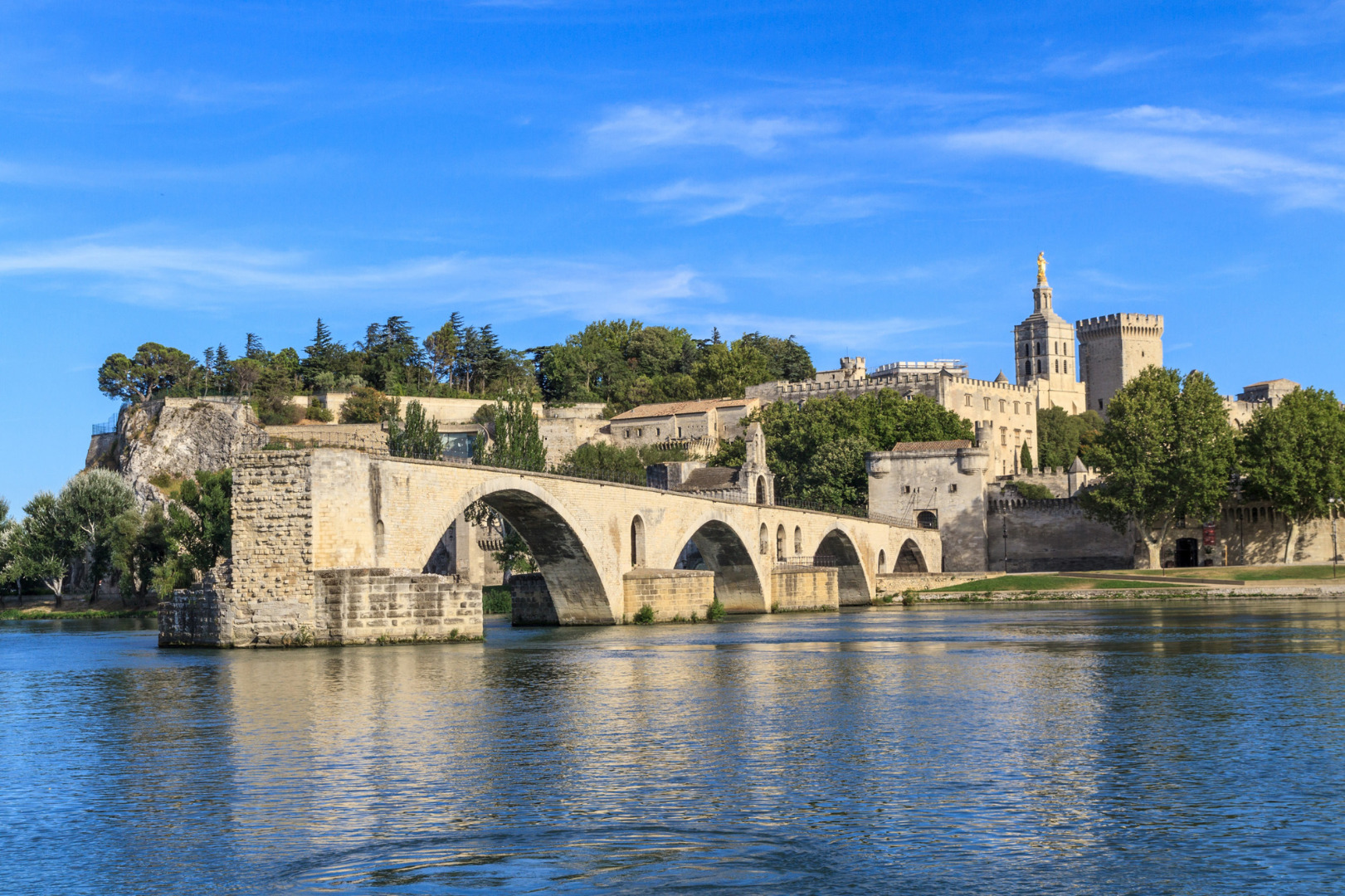
Avignon, France
The walled city of Avignon is one of the fascinating towns in southern France, with a host of historic gems to explore—including the fortress residence of rebellious popes who broke from Rome and once lived and ruled here. Looking at the charming cafés and entertaining street performers in Clock Tower Square, it's hard to believe that this lively scene owes its existence to a 15th-century siege.
This area was the heart of medieval Avignon (and the site of the original Roman town), crowded with cottages and narrow streets—until a pope had it all demolished to give his troops a clearer field of fire. That is Avignon in a nutshell: It was the city of the popes. The Avignon popes built the ramparts that still surround the Old Town and the huge, nearly impregnable fortress that dominates the UNESCO-designated district; in fact, the city did not officially become part of France until 1791. Stand below the high, thick walls to get a sense of just how daunting these fortifications were, then prepare to climb many steps as you tour the Palace of the Popes itself—it’s worth it!
Spend Time on the French Riviera
Hugging the Mediterranean, this South Easterly corner of France offers some of the best weather in the entire country, not to mention fresh seafood and a more sedate pace of life. The likes of Monaco and Nice are some of the blockbuster attractions here. The tiny and picturesque hilltop town of St. Paul de Vence is especially worthy of a visit, known for being the laid-back escape bolt hole for creatives and actors past and present.
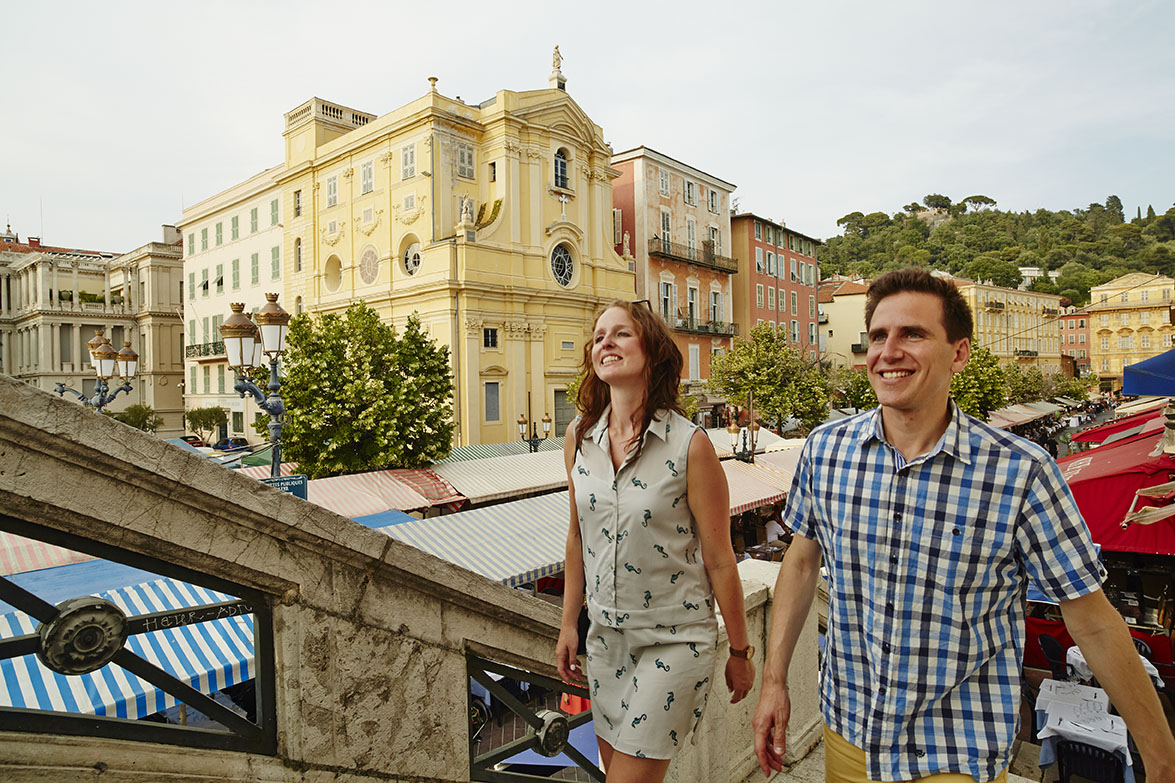
Nice, France
Located on the French Riviera, Nice is the second biggest tourist destination in France, after Paris. Boasting a mild Mediterranean climate, a colorful culture, and a flawless shoreline complete with a strip of terrific seaside resorts, this Southeastern French city offers visitors the perfect combination of luxurious seaside resort life mixed with cosmopolitan European city vibes. Nice is a must-visit destination from its captivating architectural structures to local market centers and an art and history scene that will impress even the toughest art/history connoisseur.
Beaune, France
Beaune may not be a large town, but it brims with history, a wealth of splendid regional architecture, and incredible food. Nestled inside medieval ramparts, Beaune was the seat of the warlike dukes of Burgundy until the 16th century. It is best known for two magnificent sights: the Hospices de Beaune and the open-air market.
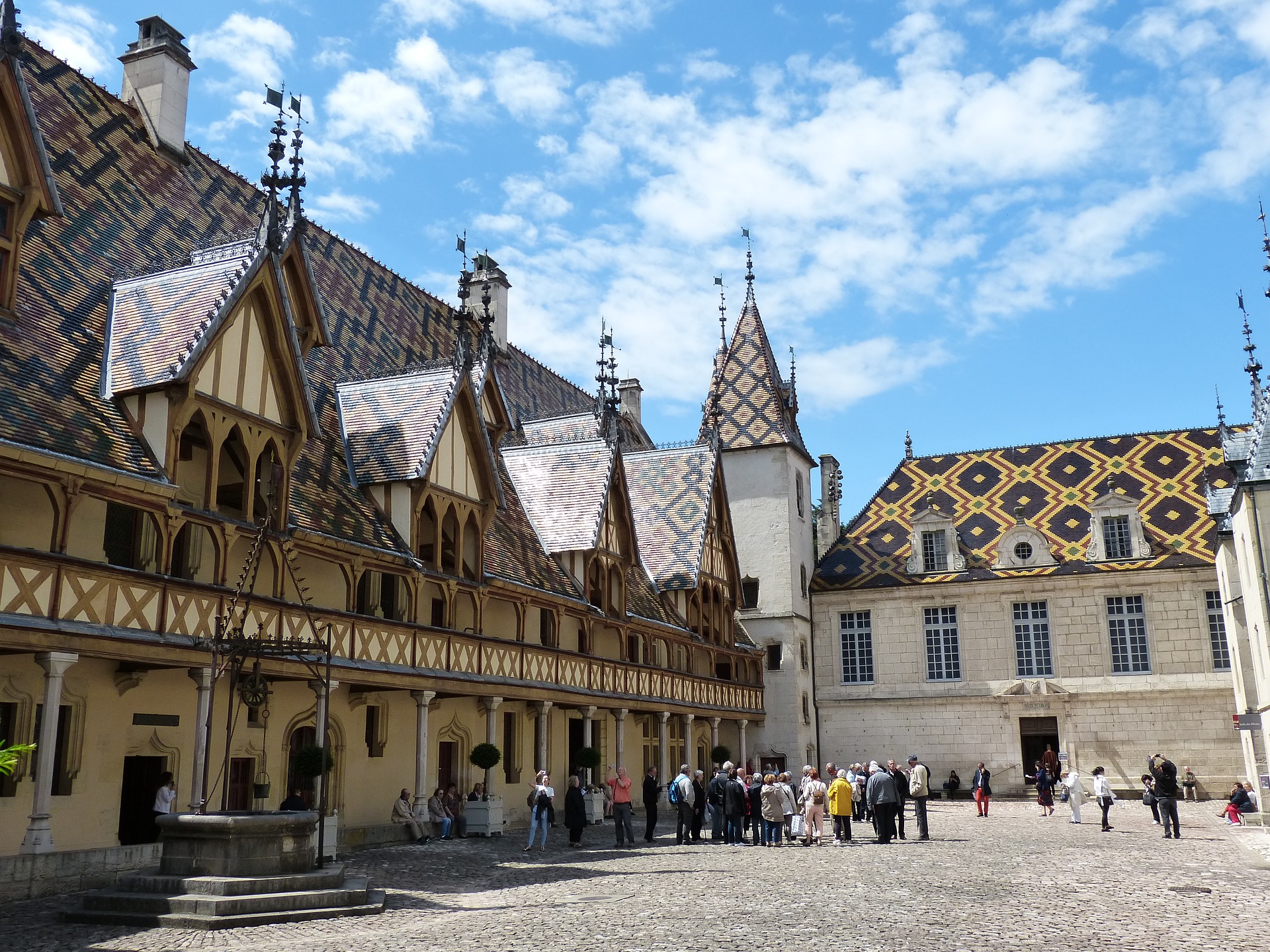
You’ll immediately recognize the Hospices de Beaune (also known as Hôtel-Dieu) by its fabulous multicolored-tile roof—a Burgundy symbol. Founded as a charitable institution by the duke’s chancellor in 1443, the hospital became a model for charitable giving in southern France, one with a unique fundraising tradition that continues to this day. Over the centuries, the hospice monks were given wine and vineyards, and they began selling the wine at auction to support their charitable work. The wine auction is now world-famous, and the institution remains a working hospital for the poor, with modern facilities standing alongside the historic Hôtel-Dieu.
The Best Places to Go in Bordeaux, France
Long renowned for being one of the world’s finest wine regions, Bordeaux has also developed a gastronomic scene to accompany its variety of world-class vintages. Drawing from traditions around France and sourcing produce from the nearby Bay of Biscay and Garonne River, the region has created quite a diverse culinary palette. Some locally-sourced favorites include wood pigeon, Pauillac lamb, Bigorre pork, and Bazas beef.
The Médoc Region, France
In 1855, when Napoleon III asked for a classification of the best wines in France to give visitors, some 60 Médoc wines were awarded Grand Cru status. The legendary Médoc region abounds with prestigious wine châteaux in a dizzying array of architectural styles and miles of grapevines stretching to infinity.
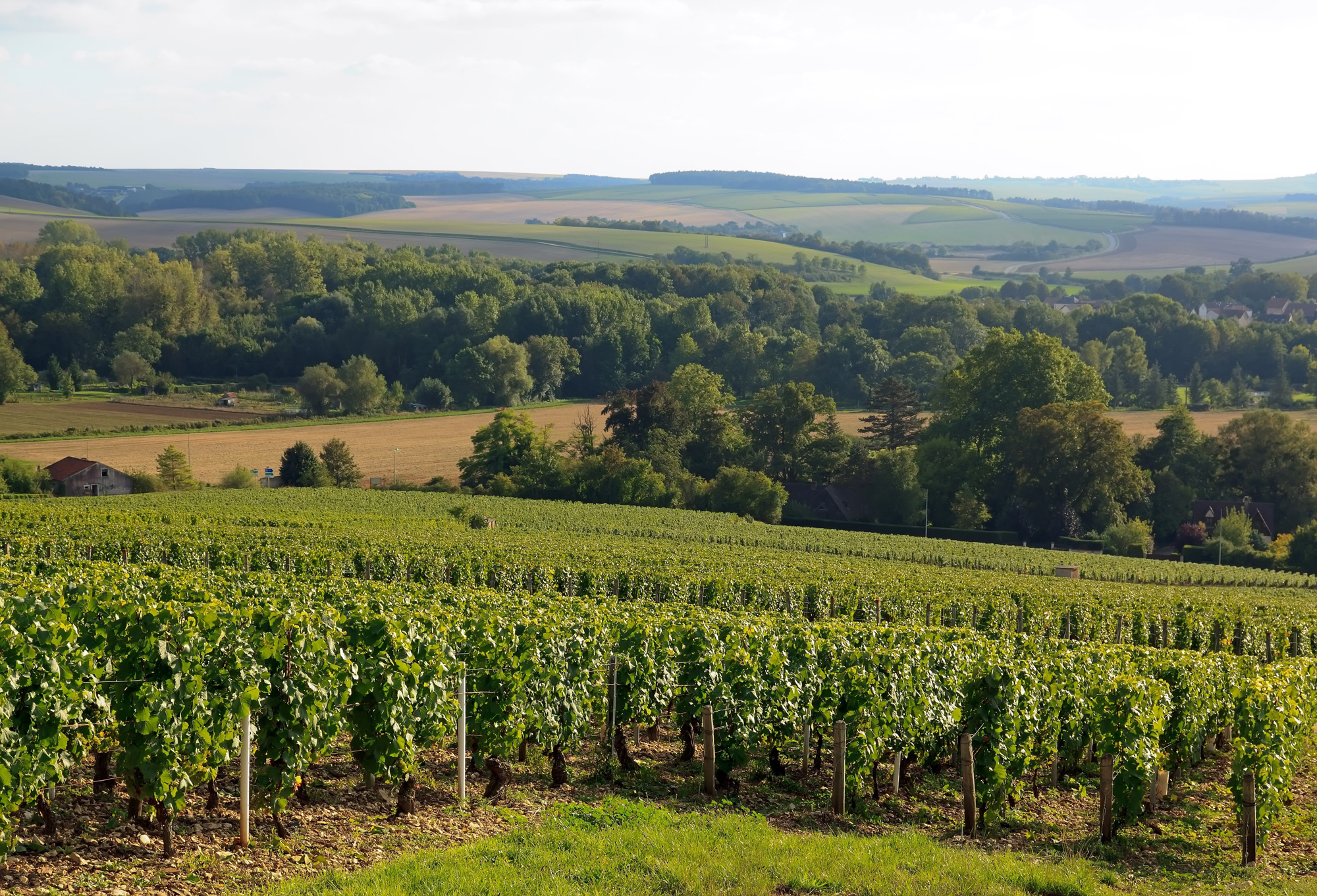
A panoramic tour of this legendary landscape takes you from Pauillac to the tip of the Médoc peninsula, past storied vineyards of the region, including Château Latour, Mouton Rothschild, and Pichon Longueville Baron, and through the villages of Margaux, Saint-Julien, and Saint-Estèphe. You might be surprised to discover that the peninsula is only three miles wide, though it is 50 miles long, and the road carries you past a dizzying array of architectural styles, Renaissance, Greek Revival, and medieval, and miles of grapevines.
The French phrase “la douceur de vivre” accurately describes time spent in Cadillac, known for its deliciously flavored dessert wines. Visit Château Royal de Cazeneuve, the site of Henry IV’s and Queen Margot’s tempestuous love. Meet the owner around a glass of Sauternes in the reception hall.
The Market in Libourne, Bordeaux, France
France’s rich agricultural tradition is the heart and soul of the region’s exquisite cuisine—and what better way to get a taste of the freshest vegetables, cheeses, bread, and fruits than with a visit to Libourne’s lively farmers’ market? Libourne’s market is the heart and soul of the town; everyone comes here to choose the freshest vegetables, the ripest cheeses, the most luscious fruits, the loveliest flowers, and to chat with the producers and growers. Check out the stalls brimming with produce in the market square, duck into the covered market and savor the enticing aromas of bread and cheese, fish, and meat.
Quai des Chartrons, Bordeaux, France
Catch a tram at the Quai des Chartrons to the Place de la Comédie, the heart of Bordeaux’s Golden Triangle. Though Bordeaux was the capital of Aquitaine in the Middle Ages and had its share of Gothic churches, it reached its apex in the 18th century. The splendid honey-colored stone buildings from this era make up a city core that UNESCO had designated a World Heritage Site (this is the district that inspired Baron Haussmann when he redesigned Paris at the behest of Napoleon III). Trade with the French colonies built this handsome district, furnishing vanilla, sugar, spices, and cocoa to inventive chocolatiers and bakers, who used these goods to create iconic desserts.
Saint-Émilion, France
Visit breathtaking Saint-Émilion and immerse yourself more deeply in the region’s history and wine culture. The medieval town of Saint-Émilion is an ideal place to linger. Shops brimming with wine and wine tools line the steep cobblestone streets; medieval ramparts that witness battles for control between French and English monarchs still stand, and vineyards encroach upon the village.
Hilltop Saint-Émilion offers both exceptional architecture and historic vineyards. The Romans were the first to plant grapes here, and this was the first vineyard region to be protected by UNESCO because of its history.
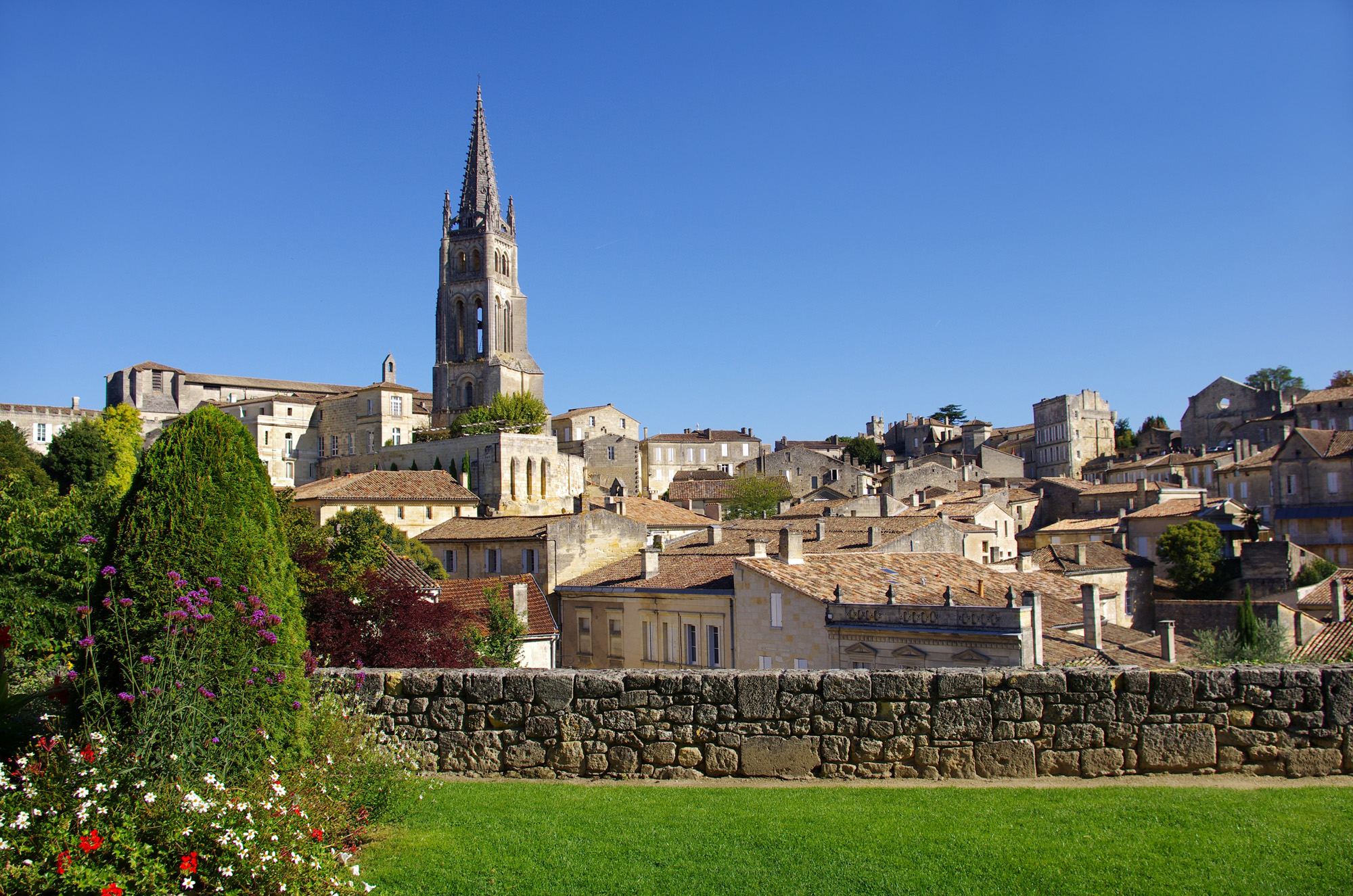
Of all the sights, perhaps the most extraordinary is the 12th-century church carved into a cliff. Only the tower is above ground; the rest of the church is subterranean. Its numerous underground galleries provided refuge during periods of strife and include the grotto where St. Émilion, for whom the town is named, lived out his life in the ninth century. You have to see it for yourself—you’ll be amazed by its almost unfathomable construction.
Discover Bordeaux’s many charms. France’s rich agricultural tradition is the heart and soul of the region’s exquisite cuisine.
Brilliant Bordeaux
Day 1
Bordeaux (Embark)Day 2
Cussac Fort Médoc, PauillacDay 3
CadillacDay 4
Blaye, Bourg sur GirondeDay 5
Libourne (Saint-Émilion)Day 6
Libourne, BordeauxDay 7
BordeauxDay 8
Bordeaux (Disembark)
Wonderful France
Day 1
Bonjour FranceDay 2
Discover the Delights of ParisDay 3
Journey through Burgundy to LyonDay 4
Continue to Monaco and the French RivieraDay 5
The French Riviera Your WayDay 6
On to Saint-Tropez and AvignonDay 7
Explore Ancient History in Pont du Gard, Arles and AvignonDay 8
Travel By High-Speed Train to ParisDay 9
Au Revoir Paris
Country Roads of France
Day 1
Welcome to ParisDay 2
Champagne Region and on to DijonDay 3
Free Time in DijonDay 4
ChamonixDay 5
Lakeside Annecy and GrenobleDay 6
The French Riviera to reach NiceDay 7
Nice and the Principality of MonacoDay 8
Picturesque ProvenceDay 9
Avignon and Pont du GardDay 10
Carcassonne and to AlbiDay 11
Free Time in AlbiDay 12
Cahors and RocamadourDay 13
Exploring the Dordogne ValleyDay 14
Paris, The City of LightDay 15
Romantic Capital on the SeineDay 16
Au Revoir Paris
Ultimate France
Day 1
Bordeaux (Embark)Day 2
Cussac Fort Médoc, PauillacDay 3
CadillacDay 4
Blaye, Bourg sur GirondeDay 5
Libourne (Saint-Émilion)Day 6
Libourne, BordeauxDay 7
BordeauxDay 8
Bordeaux (Disembark), Transfer to Paris via High-Speed TGV Train (Embark)Day 9
La Roche-Guyon, Vernon, GivernyDay 10
RouenDay 11
Caudebec-en-Caux (Honfleur or Étretat)Day 12
Rouen (Normandy Beaches)Day 13
Mantes-la-Jolie (Versailles)Day 14
ParisDay 15
Paris (Disembark), Transfer to Lyon via High-Speed TGV Train (Embark)Day 16
LyonDay 17
Mâcon (Beaune)Day 18
Tain-l’Hermitage (Tournon)Day 19
ViviersDay 20
AvignonDay 21
ArlesDay 22
Arles (Disembark)
A Portrait of Majestic France
Day 1
Bordeaux (Embark)Day 2
Cussac Fort Médoc, PauillacDay 3
CadillacDay 4
Blaye, Bourg sur GirondeDay 5
Libourne (Saint-Émilion)Day 6
Libourne, BordeauxDay 7
BordeauxDay 8
Bordeaux (Disembark), Transfer to Paris via High-Speed TGV Train (Embark)Day 9
La Roche-Guyon, Vernon, GivernyDay 10
RouenDay 11
Caudebec-en-Caux (Honfleur or Étretat)Day 12
Rouen (Normandy Beaches)Day 13
Mantes-la-Jolie (Versailles)Day 14
ParisDay 15
Paris (Disembark)
The Best Places to Visit and Things to Do in Normandy, France
The Normandy region in northern France holds an integral place in French, British, and American history.
Vikings began raiding the coast in the 8th century. In 911 AD, the French king, Charles III, signed a treaty with the Viking chief, Rollo, which allowed these “Norsemen” — who became known as Normans — to settle the territory. A descendant of Rollo, William the Conqueror was born in 1028. William became the Duke of Normandy and, in 1066, invaded England and won the British crown at the Battle of Hastings. William served as the king until his death in 1087.
Normandy Beaches and D-Day Landings
Nearly a millennium later, another invasion of the Normandy coast reshaped history. On June 6, 1944, thousands of Allied troops stormed the beaches of Normandy during the D-Day Landings. The 60-mile stretch of coastline had been chosen not only for its flat beaches but also for the element of surprise.
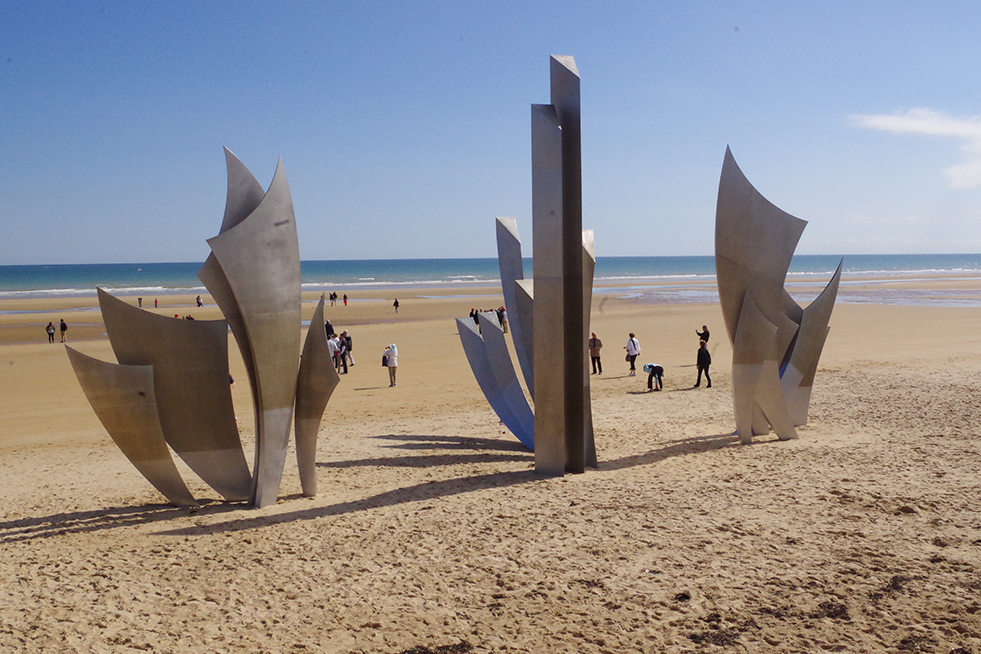
The plan worked despite coming under heavy fire and suffering heavy losses on D-Day. Allied troops took control of the coast, which catalyzed the campaign that led to French liberation and Victory in Europe.
There are several D-Day museums and monuments that you can visit in Normandy today. It’s a moving experience and a powerful way to honor the lives lost during the war.
While the Nazis had heavily fortified the Normandy coast, they had anticipated an attack further north — near Calais — where the Allies would have a shorter journey across the English Channel.
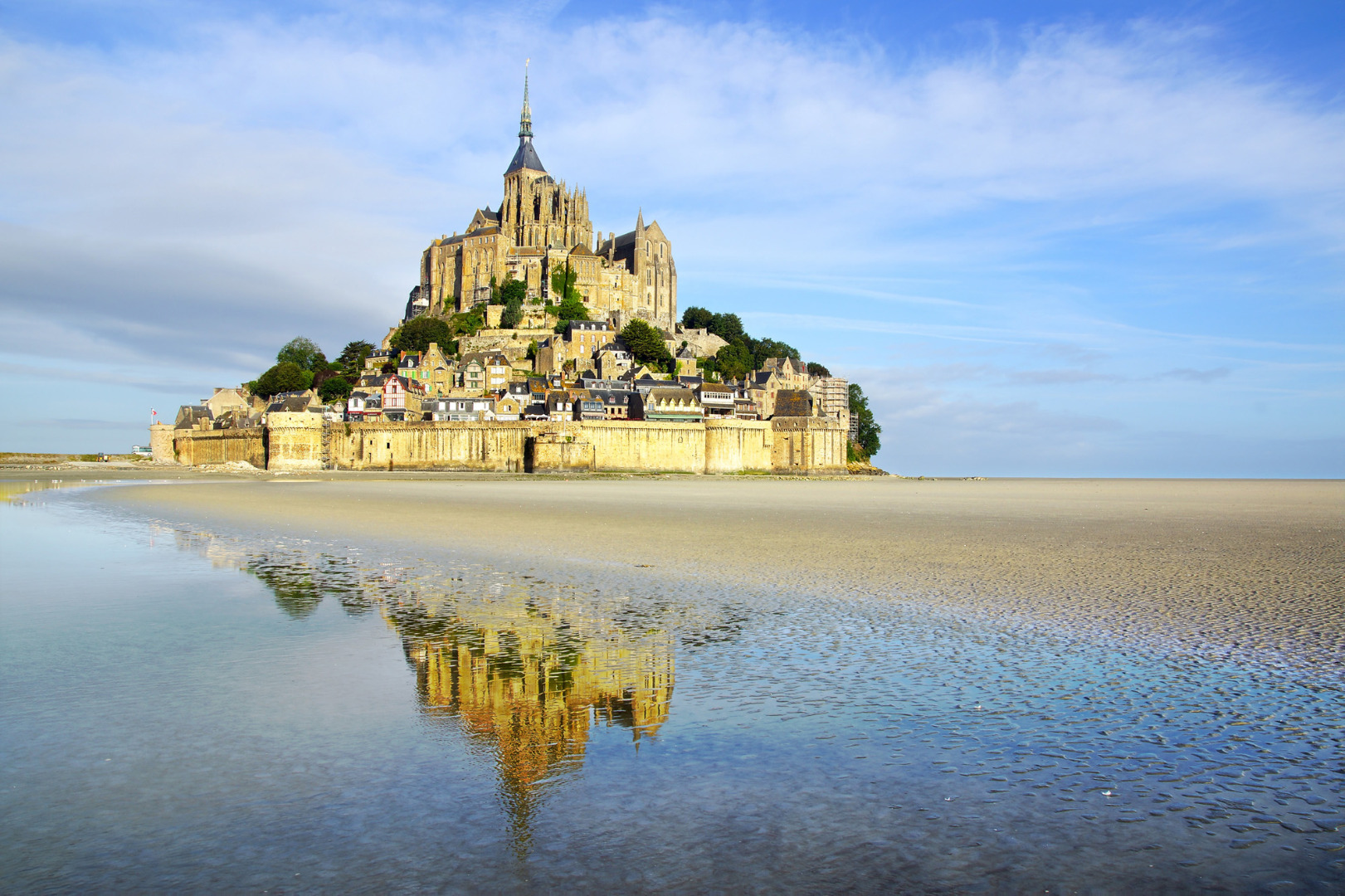
Mont-Saint-Michel, France
Perched on a rocky islet in the midst of a vast sandbank out in a bay between Normandy and Brittany, is the fortified island town of Mont-Saint-Michel. Both the town and the bay are listed as UNESCO Heritage sites. Sometimes called the 'Wonder of the West,' Mont-Saint-Michel is a Gothic-style Benedictine abbey dedicated to the archangel, St Michael. Legend has it, the abbey was built after the Archangel Michael appeared to the Bishop of Avranches inspiring him to build a church atop the island.
Rouen, Normandy
In addition to its historical significance, Normandy also offers picturesque landscapes. Serene beaches and coastal resorts give way to rolling green hills, pastoral farms, and country villages.
Nearby Rouen was the medieval capital of Normandy and its historic quarters remain intact, including the Gothic cathedral that Claude Monet captured in a series of paintings. Rouen is the city where Joan of Arc was tried for witchcraft and heresy and ultimately burned at the stake at age 19; a museum opened in her honor.
Visit the poignant Omaha Beach Memorial Museum, spend reflective moments at the American Military Cemetery, and pay respects in Sainte-Mère-Église
Normandy, Brittany and the Loire Valley
Day 1
Welcome to ParisDay 2
Rouen, Honfleur and DeauvilleDay 3
Normandy Beaches and D-Day LandingsDay 4
Mont Saint-Michel and Saint-MaloDay 5
Villandry ExperienceDay 6
Scenic Drive Along the Loire ValleyDay 7
La Beauce and Chartres to Paris, City of LightDay 8
Au Revoir Paris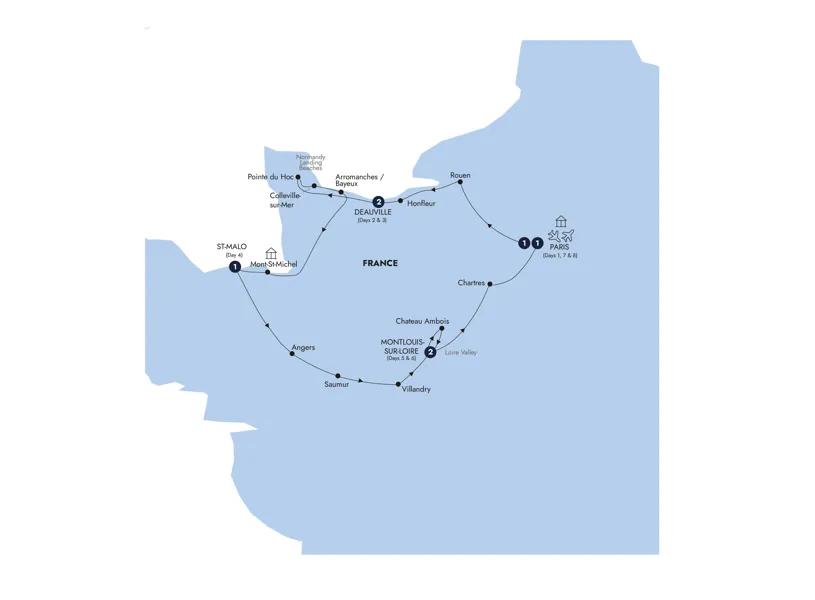
The Treasures of France including Normandy
Day 1
Bonjour ParisDay 2
Admire Normandy’s Colorful HonfleurDay 3
Explore the D-Day Landing BeachesDay 4
Journey through Picturesque Normandy and BrittanyDay 5
Continue to the Beautiful Loire ValleyDay 6
Discover the Stunning French ChâteauxDay 7
Continue to Chartres and ParisDay 8
Farewell Paris
WWI and WWII Battlefields
Day 1
Welcome to LondonDay 2
See the Sights of LondonDay 3
Cross the English Channel by Eurostar to BrusselsDay 4
Venture to Dunkirk, Fromelles, Vimy Ridge and LensDay 5
Off to the Ypres Battlefields and Menin GateDay 6
Discover the SommeDay 7
Cross Normandy to CaenDay 8
Explore the D-Day Normandy BeachesDay 9
Journey to Elegant ParisDay 10
Discover the Delights of ParisDay 11
Au Revoir Paris
Paris and Normandy
Day 1
Paris (Embark)Day 2
La Roche-Guyon, Vernon, GivernyDay 3
RouenDay 4
Caudebec-en-Caux (Honfleur or Étretat)Day 5
Rouen (Normandy Beaches)Day 6
Mantes-la-Jolie (Versailles)Day 7
ParisDay 8
Paris (Disembark)
Monet's Home in Giverny, Normandy
At the former home of Claude Monet in northern France, visitors can soak up the surroundings that inspired one of the greatest painters of all time.
Forty-five miles northwest of Paris lies the tiny village of Giverny, France. In 1883, Claude Monet fell in love with the picturesque town and made it his home for more than forty years. The property, which has been opened to the public since 1980, boasts Monet’s delightful home, artist’s studio, flower and water gardens, and reproductions of many of his best-known paintings.
Flower Gardens of Giverny
The flower gardens at Giverny are much like Monet’s paintings, wild yet harmonious. The artist was not a fan of constrained gardens and allowed them to grow freely for the most part.
The land is divided into flowerbeds where varying heights create volume. There are colored banks of annuals, long-stemmed hollyhocks, and fruit trees. For a splash of the unexpected, Monet mixed simple flowers such as daisies and poppies with rare varieties.
The iron arches in the central alley are covered with soft pink climbing roses. At the end of the summer, nasturtiums bloom, adding a burst of color.
Over the years, Monet developed a passion for botany and invested a great deal in acquiring rare varieties to the extent that he even joked that all his money went to his garden.
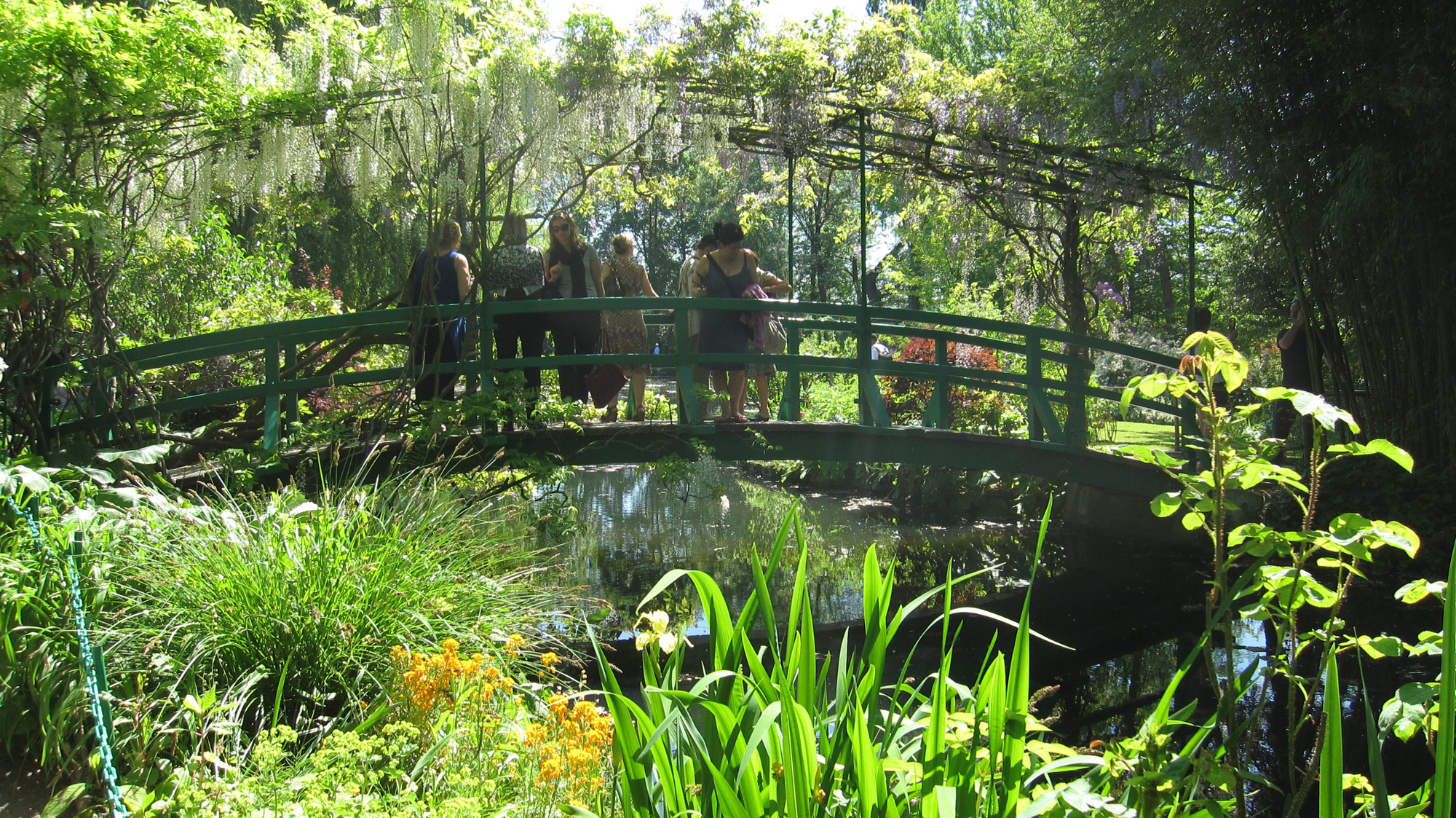
Water Gardens of Giverny
Ten years after his arrival at Giverny, Monet bought the piece of land neighboring his property and had his first pond dug. He then developed a water garden full of asymmetries and curves, inspired by the Japanese gardens depicted in the paintings he collected.
Visitors of the water gardens will witness several famous icons of Monet’s paintings: the Japanese bridge covered with wisterias, weeping willows, a bamboo forest and the famous nympheas in full bloom during the summer.
It is often said that Monet created his work of art twice, first in the shaping of his garden and then in its depiction in his paintings.
Monet’s Home in Giverny
Every room in the house represents Monet’s unique style and taste. The dining room, painted in two tones of yellow, displays a series of Japanese prints he collected over the years from artists like Hokusai, Hiroshige and Utamaro.
The Loire Valley, France
Located a few hours south of Paris lies France’s Loire Valley. Spotted with open fields, winding rivers, dense patches of forest, and hundreds of châteaux — the Loire offers travelers an unforgettable perspective of French life through the eyes of its nobility.
Top Châteaux to Visit in The Loire Valley, France
Château Chenonceau
Originally built in 1513, the castle was successively embellished by Diane de Poitiers and then Catherine de Medici. A visionary castle from the Renaissance until the Age of Enlightenment, Chenonceau has always benefited from innovation and the greatest thinkers and philosophers.
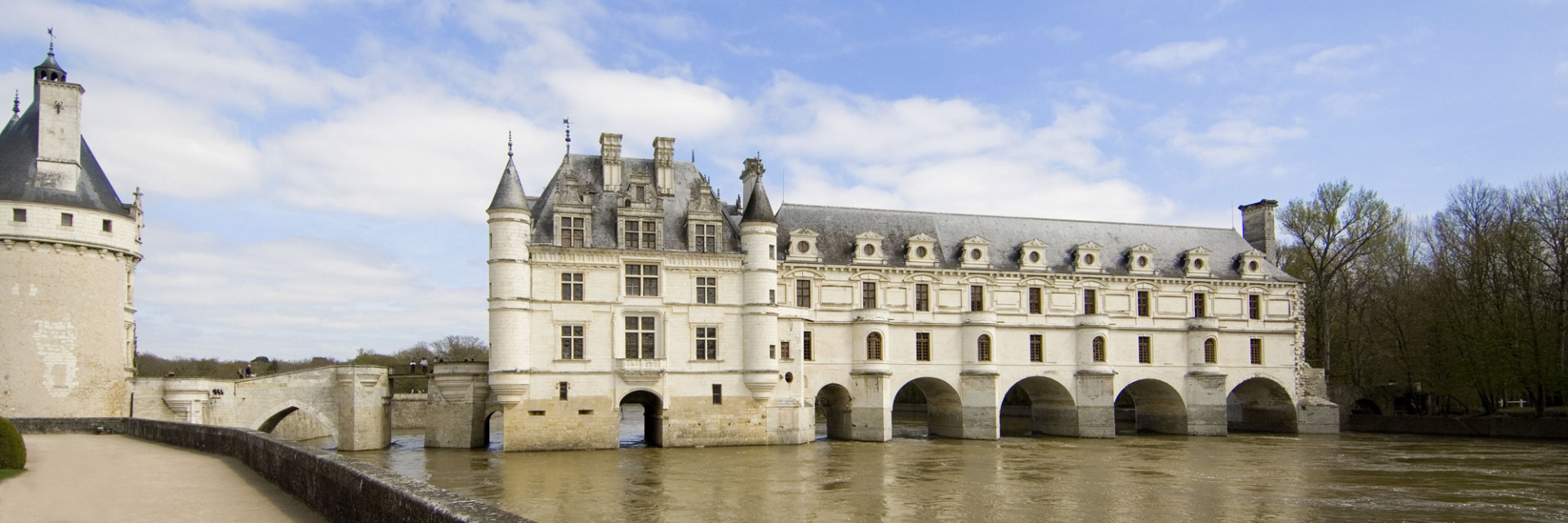
Today, visitors worldwide witness its well-preserved beauty, making it the second most visited castle in France after Versailles. The best views are seen from the side of the castle, where it rises above the Cher river. Magnifique!
Chenonceau is completed with lavishly furnished interiors, including the living room of Louis XIV, a guards’ room, library, and study — but most impressive are the kitchens. The enormous space includes a dining room where castle employees had their meals, a butchery, and a larder. These Renaissance kitchens were fitted with modern equipment to convert the castle into a hospital during the First World War. It was fascinating to tour the space and imagine how feasts were prepared for figures such as Louise de Lorraine.
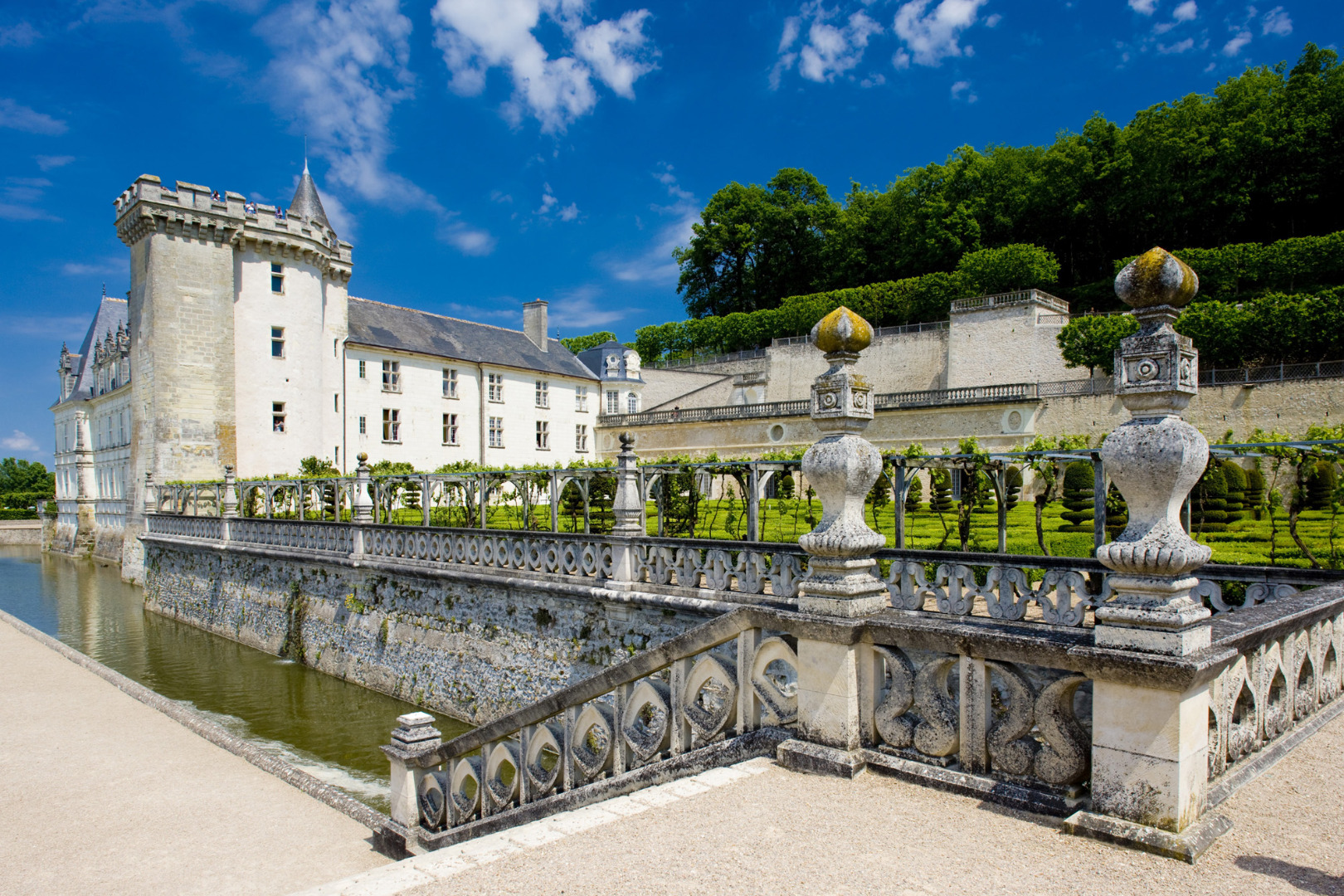
Château Villandry
The castle, completed in 1536, was the last of the great Renaissance castles to be constructed in the Loire. In the 18th century, a new lord of Villandry added large service quarters on either side of the forecourt. The castle’s six gardens are maintained and remain beautifully preserved.
Known as the “kitchen gardens” (jardin potager in French), the area consists of nine patches made of different geometric motifs. You can find just about every vegetable imaginable in the castle’s gardens throughout the year, including beautiful splashes of orange pumpkins during the autumn and winter months. All of the produce is grown organically, and some of it can even be sampled at the Château’s restaurant.
Villandry’s arbor maze, pictured above, is another impressive example of Renaissance design.
Château Amboise
Visit the town of Amboise for a tour of its castle, Château Amboise. A place of royal power in the Renaissance, the castle housed many of the Valois and Bourbon kings. Countless political and social significance events took place here: it’s where Charles VIII was born, the children of Henri II and Catherine de Medici were raised, and numerous conspiracies and peace treaties emerged.
It is also reputed to be the final resting place of Leonardo da Vinci. In the castle’s Gothic cathedral, you can visit the tomb where he is believed to be buried.
The town itself, which has been occupied since Neolithic times, is a lovely place to have lunch or spend some time exploring the ancient streets of the old quarter.
Spend your time admiring the beautiful châteaux of the Loire Valley, drinking fine wine, and taking in all that this region has to offer
Normandy, Brittany and the Loire Valley
Day 1
Welcome to ParisDay 2
Rouen, Honfleur and DeauvilleDay 3
Normandy Beaches and D-Day LandingsDay 4
Mont Saint-Michel and Saint-MaloDay 5
Villandry ExperienceDay 6
Scenic Drive Along the Loire ValleyDay 7
La Beauce and Chartres to Paris, City of LightDay 8
Au Revoir Paris
The Treasures of France including Normandy
Day 1
Bonjour ParisDay 2
Admire Normandy’s Colorful HonfleurDay 3
Explore the D-Day Landing BeachesDay 4
Journey through Picturesque Normandy and BrittanyDay 5
Continue to the Beautiful Loire ValleyDay 6
Discover the Stunning French ChâteauxDay 7
Continue to Chartres and ParisDay 8
Farewell Paris
Wonderful France
Day 1
Bonjour FranceDay 2
Discover the Delights of ParisDay 3
Journey through Burgundy to LyonDay 4
Continue to Monaco and the French RivieraDay 5
The French Riviera Your WayDay 6
On to Saint-Tropez and AvignonDay 7
Explore Ancient History in Pont du Gard, Arles and AvignonDay 8
Travel By High-Speed Train to ParisDay 9
Au Revoir Paris
Country Roads of France
Day 1
Welcome to ParisDay 2
Champagne Region and on to DijonDay 3
Free Time in DijonDay 4
ChamonixDay 5
Lakeside Annecy and GrenobleDay 6
The French Riviera to reach NiceDay 7
Nice and the Principality of MonacoDay 8
Picturesque ProvenceDay 9
Avignon and Pont du GardDay 10
Carcassonne and to AlbiDay 11
Free Time in AlbiDay 12
Cahors and RocamadourDay 13
Exploring the Dordogne ValleyDay 14
Paris, The City of LightDay 15
Romantic Capital on the SeineDay 16
Au Revoir Paris
You Might Also Like
Find Your Perfect Destination
 Tap To Call
Tap To Call
 Free Brochure
Free Brochure
Order Your Free Brochure
Sign up to order your FREE travel brochure subscription and get exclusive offers only available to our subscribers
Thanks for signing up to receive our latest brochure. As a subscriber, you'll be the first to receive our new brochures as they are released, plus great deals in your inbox.



